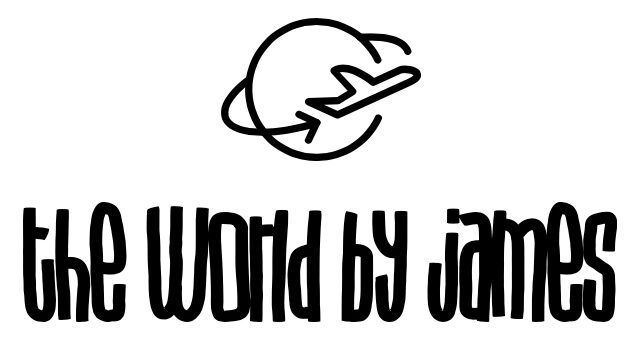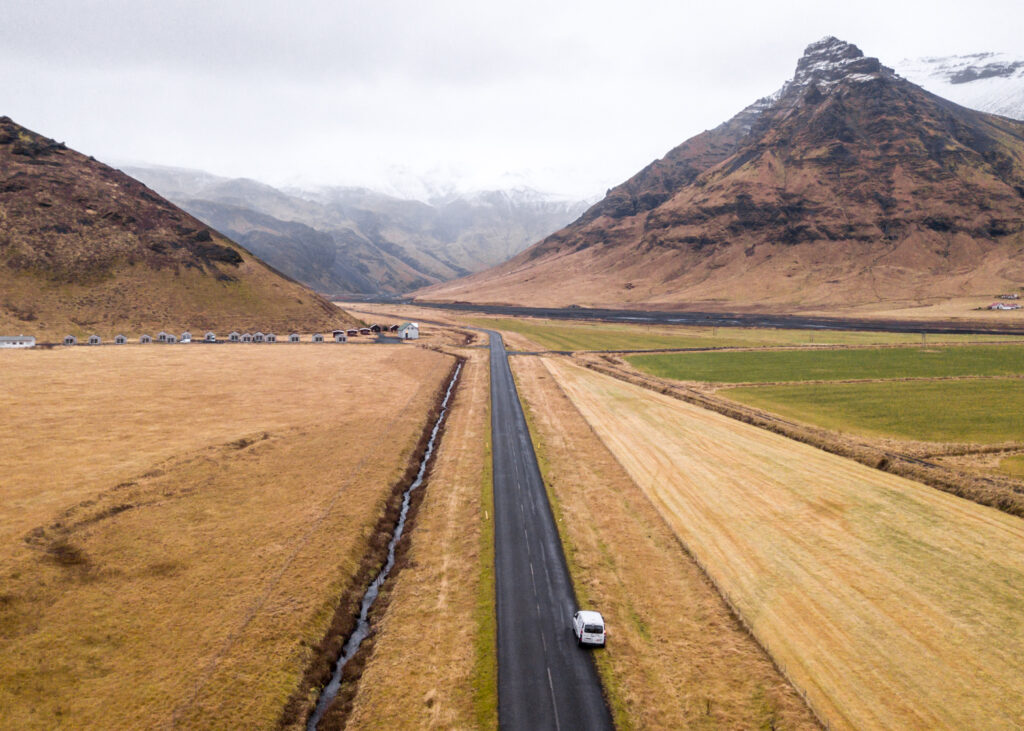Disclosure: This post contains affiliate links that I may earn a small commission from if you purchase something through them. This comes at no extra cost to you!
Road-tripping Iceland’s Ring Road is one of the best road trips in the world – fact. I mean, what other countries can you circumnavigate in just a week, with every day different to the last and crammed with unreal locations? Not many!
It’s very hard to talk about Iceland and not resort to common clichés, but ‘The Land of Ice and Fire’ is, in one word, epic. With famous film locations, iconic glaciers, sprawling black sand beaches, thundering waterfalls, curious aromas, active volcanoes and geothermal pools, Iceland is like a playground for the adventurous.
This itinerary will take you on the road trip of a lifetime and introduce you to everything you can see with just 10 days in the country, even including some gems that you won’t find in the guidebooks.
10 days, 28 cool locations, 2195 kilometers, countless memories and, best of all, for a price-tag of just £1000!
Table of Contents...
Toggle
Useful information on Iceland
- Capital: Reykjavik
- Language: Icelandic
- Population: 372,000
- Currency: Icelandic Krona (ISK): £1/$1 = 175/142 ISK
- Visa info: Iceland is a Schengen country, granting EU members free access between 27 European countries. Learn more here.
As a natural world, road trip and photography addict, the place was like a drug for me. Like many first-time visitors, I was in complete awe of the country when I drove the Ring Road. Every day is a sensory overload and the ever-changing, out-of-this-world landscapes are truly mind-blowing.
There’s no hiding the fact that a road trip like this will not be cheap, but I’m going to show you how you can see the best of Iceland over 10 days without spending more than £1000 (which, by the way, is not a lot here!). You can find all the information you need for each location including a detailed description of what it is, how to get there and what to expect. I’ve also linked each one to Google Maps so you can pin them and start mapping the way!
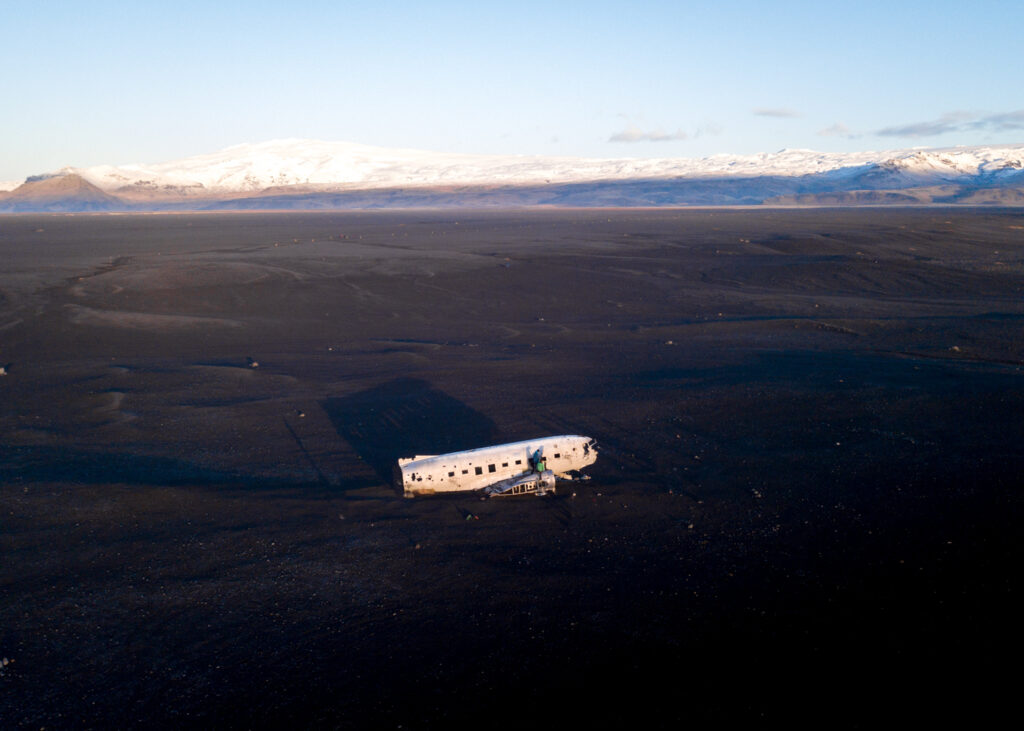
What is the Ring Road?
‘Route 1’ or ‘The Ring Road’ encompasses the entire perimeter of the country and connects all major towns to each other.
You can see the Ring Road on the map below – the only main (yellow) road going around the country.
A direct lap of the Ring Road is 1335km (825 miles), but a road trip like this will be more like 2000km after detours. The scenery along the road is dramatic to say the least, as it passes nearly all of Iceland’s most iconic landmarks and natural attractions.
Although you could technically drive the entire route in around 14 hours, a minimum of at least 7 days is required to see the best bits and really get the most out of it. I recommend going anti-clockwise around the Ring Road, which is the most common route to take.
Every day is an eye-opening and jaw-dropping experience, and you won’t want to rush a second of it!
Campervan rental
Because this itinerary is geared towards a road trip around the Ring Road in winter, the areas that require an off-road 4×4 are not included, meaning renting a campervan is the best choice by far. Having a home on wheels for a road trip is a no-brainer if you ask me!
For my trip I booked a Renault Kangoo with Rent.Is before arriving in the country. I paid £550 for 10 days which, split between two and compared to hotel prices, is an absolute steal.
Although the cheapest and smallest option in their range, the Kangoo had everything you could possibly need for a road trip, including a fridge, winter tyres, all cooking and living essentials and a heater which ran on a separate battery meaning it could be on overnight.
Most companies will collect you from the airport and take you to their office to pick up the van and sign all relevant paperwork. Make sure you scan the vehicle for existing damage before driving off and make the representatives aware if you find anything. This means you’ll avoid a potentially heft fine when you return it.
5 Iceland budgeting tips
Iceland is expensive… there’s no denying it. That said, here are
some quick-fire tips to keep the spending to a minimum during your
journey.
For more tips on road-tripping Iceland, click below!
18 Handy Tips For A Winter Road Trip in Iceland: Know Before You Go.
- Shop at Bonus: Iceland has some of the highest living costs in the world, so food shopping can be quite tearful. Bonus supermarket is the best place to get affordable travel foods like breads, pasta and noodles. Stock up whenever you see one because supermarkets are very spread out across this vast country. For example, the distance between Bonus in Selfoss and the next one in Egilsstadir is a staggering 645km!
- Cook your own meals: If you want to save money in Iceland, don’t even think about going out for dinner or drinks! Shopping at Bonus and making your own meals for your road trip is essential to keep the spending down. Plan ahead and prep some sandwiches for lunch or bulk-cook some pasta for dinner and have it for lunch the next day too.
- Travel with someone: Travelling with someone else is an obvious way to lower costs. Splitting the costs of the pricier things like campsites, petrol and food will save you a lot of dosh for sure. It could save you hundreds on campervan rental alone, so best check to see if you have an interested friend before you book your trip!
- Rent a campervan: Renting a campervan and self-driving Iceland is one of the best decisions you’ll ever make! Not only does having a home on wheels provide you with the freedom to explore at your own pace, but it will also save you a bunch of money when compared to hotel and guesthouse prices. All you’ll need to buy are a few small gas bottles to put in the stove!
- Avoid tourist traps: When I say tourist traps, what I really mean is avoid the Blue Lagoon and Northern Lights tours. Did you know there are over 25 geothermal pools in Iceland? Yup, and some of them are even free! The Blue Lagoon is overpriced and crowded, so I recommend going elsewhere for a better experience – stay tuned to read about two other options! Northern Lights tours are another thing I don’t recommend. You’re going on a road trip around Iceland in winter – you will see the Northern Lights… (probably). Download the Aurora Alerts App and get alerts when the chances are high.
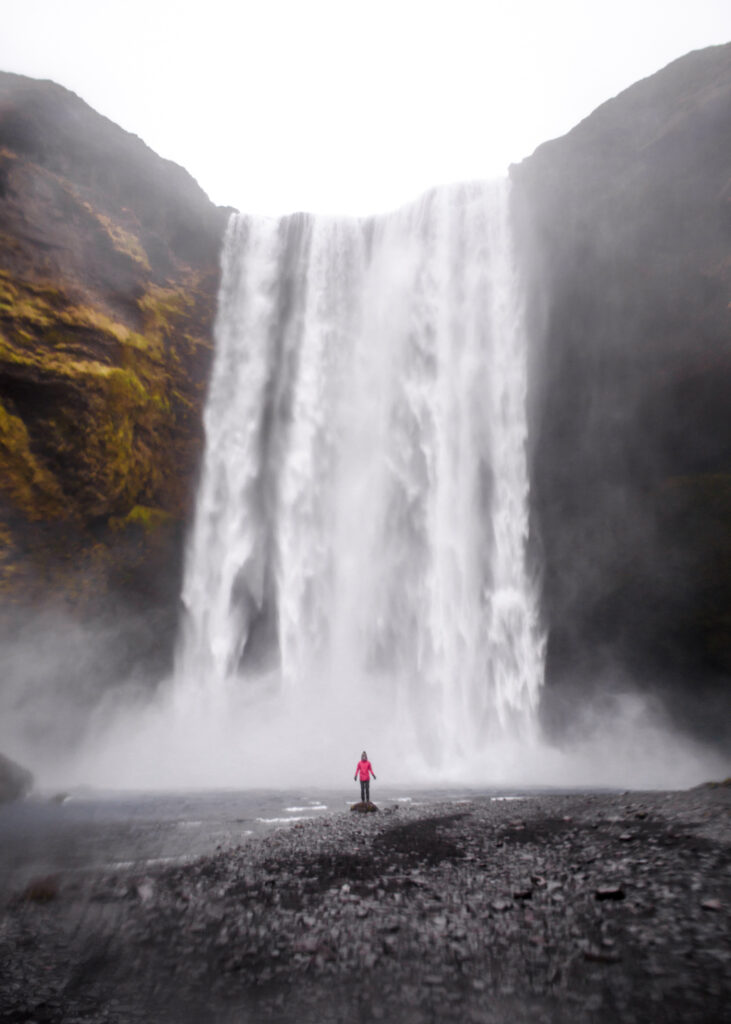
Planning to stay in Reykjavik for a while before setting off around the Ring Road? Check out accommodation prices on Booking.com here or the budget hostels below!
10 Day Iceland Itinerary & 28 Awesome Places To Stop
Day 1
Once you’ve arrived at Keflavik International Airport in the morning, collect your campervan and drive 50km to Iceland’s capital city, Reykjavik. This is the perfect time to get to know your new vehicle and get used to the wheel (and cars) being on the wrong side of the road.
I recommend checking into Reykjavik Campsite which is where I stayed for 4800 ISK (£28). Alternatively, stay in the hostel right next door (Dalur HI Hostel) on your first night in the country as it will be your last opportunity for ‘luxury’ all week!
After that, it’s time to get exploring on your first day!
1. Reykjavik free walking tour
Something I love to do when I first arrive in a country is jump on a free walking tour because they offer the perfect warm-up to your adventure and allow you to learn about the country from a knowledgeable local guide.
My guide was the self-titled “Thor The Thunder Guide”, who was complete legend. He provided loads of useful and interesting information throughout and was passionate and hilarious. Most importantly, he introduced me to some parts of the city that I would of never known about otherwise.
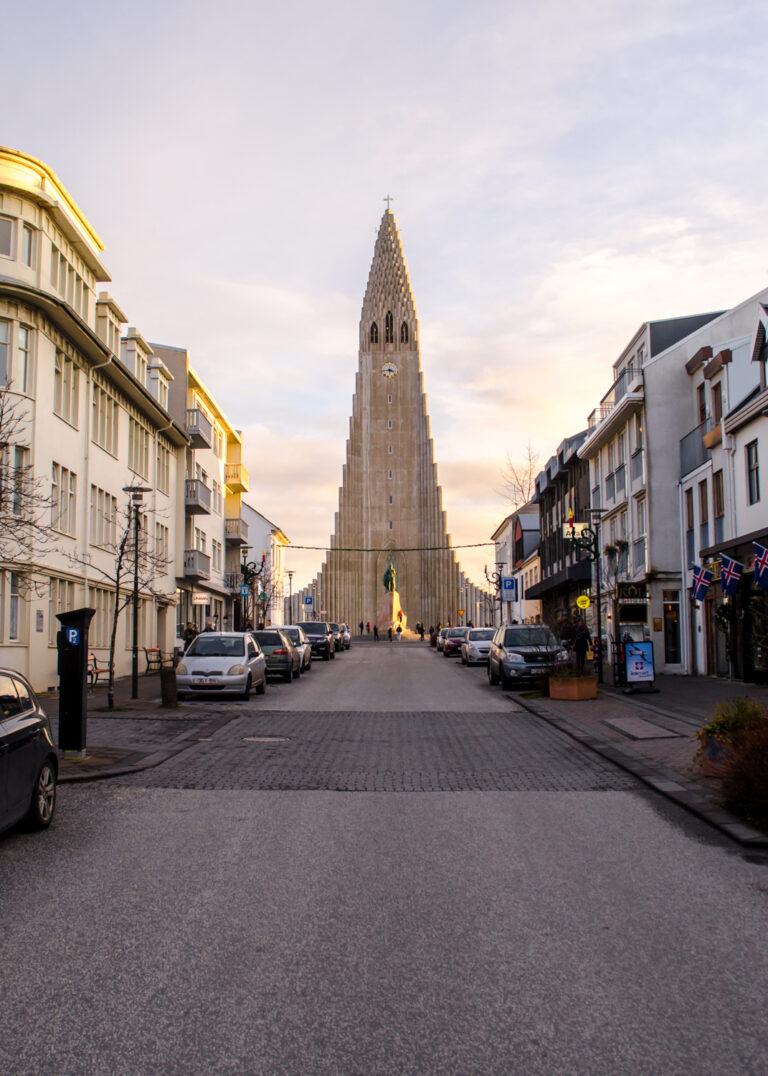
Get your bearings in the new city and learn some fun facts on your first day. The best part? It’s free!
Side note: Obviously, as the tour is free, it’s always expected to tip, but how much is totally up to you.
Get your bearings in the new city and learn some fun facts on your first day. The best part? It’s free!
Side note: Obviously, as the tour is free, it’s always expected to tip, but how much is totally up to you.
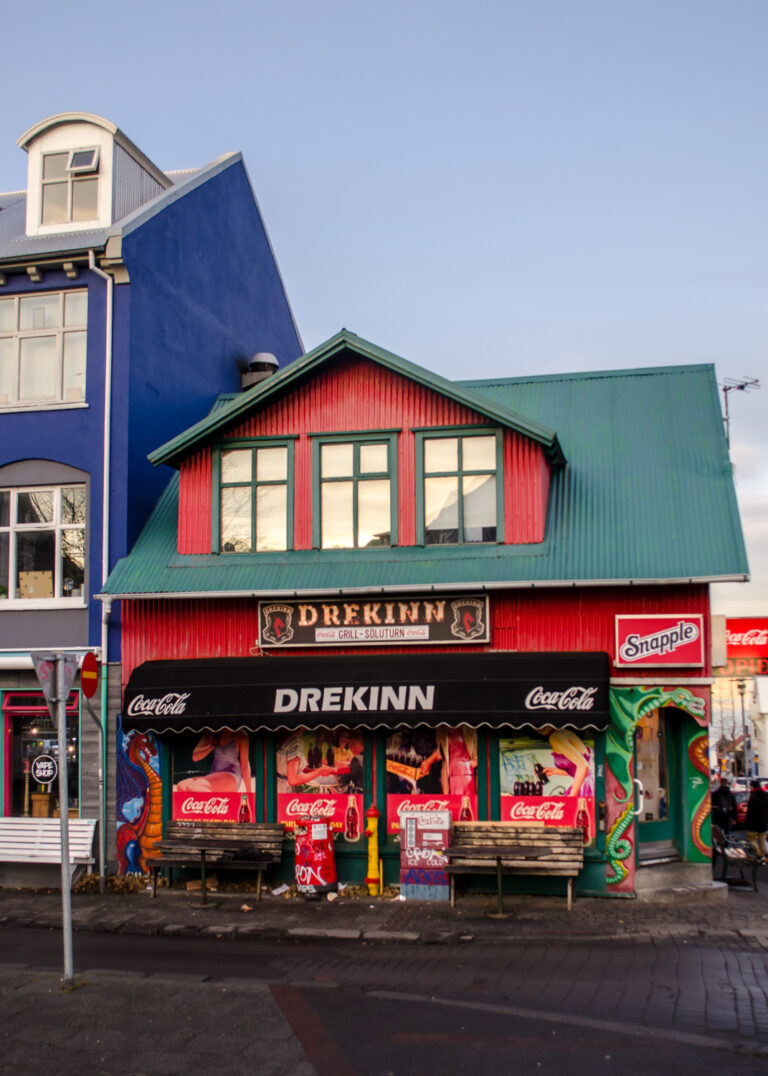
Best tours in Reykjavik if you have extra time!
Day 2
Warm up the engine, de-ice the windscreen and let the road trip of a lifetime begin!
2. Reykjadular Geothermal Area
The road trip starts…and it’s off with a bang! From Reykjavik, drive 50km to Reykjadular Geothermal Area, which is located here.
The geothermal area of Reykjadular (literally translated as “steam valley”) is nestled in a totally surreal mountainous landscape that can be reached after a scenic 3km hike uphill which takes around 1 hour.
Along the way you’ll pass steaming natural vents in the ground and bubbling sulphur pools which can reach temperatures well in excess of 100 degrees Celsius. It goes without saying that you obviously should not go anywhere near these pools, as the many signs will tell you.
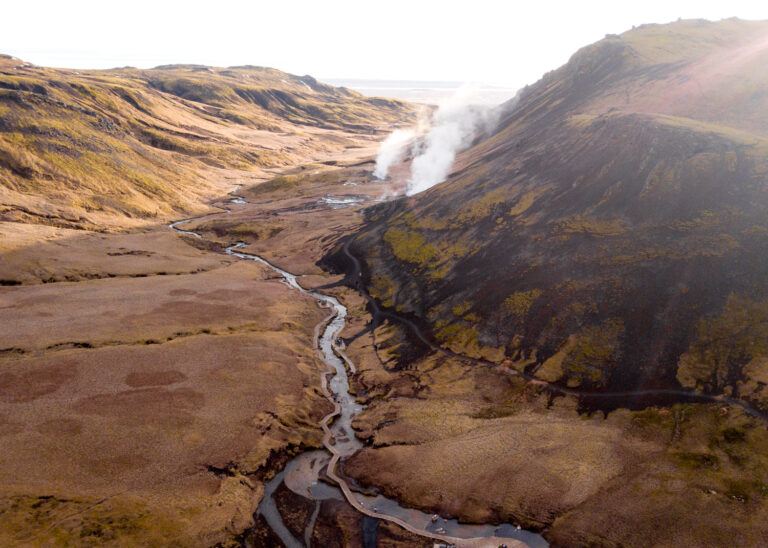
Eventually, the valley begins to open up and you’ll know when you’ve reached the best spot when you see the changing areas and other people bathing. Make sure you don’t go too far up the valley though, because the further you go the hotter the river gets… and it can get pretty damn scolding!
I was surprised at how many locals use this spot, in fact it seemed to be 90% locals when I was there which was a wholesome thing to see.
3. Seljalandsfoss
As a waterfall lover, Seljalandsfoss was the first proper ‘wow’ moment of the trip for me.
“Foss” means waterfall, which is a term you will come to know very well in Iceland! Not only is this 60m waterfall iconic and captivating even from the road, but it’s also unique in the sense that you can walk behind it… so be prepared to get soaked!
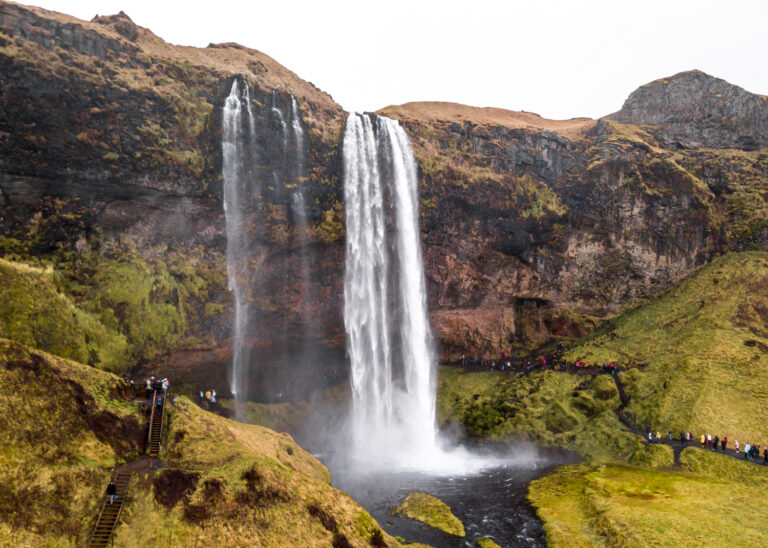
Walking the path around the base of the waterfall is a great experience and doesn’t take too long. I really recommend doing this to get the full experience and see the many different angles. You really get a sense of power from the mighty Seljalandsfoss from up close.
It is just 130km from Reykjavik and was the busiest of all the waterfalls I saw in Iceland due to its close proximity to the capital making day tours super popular.
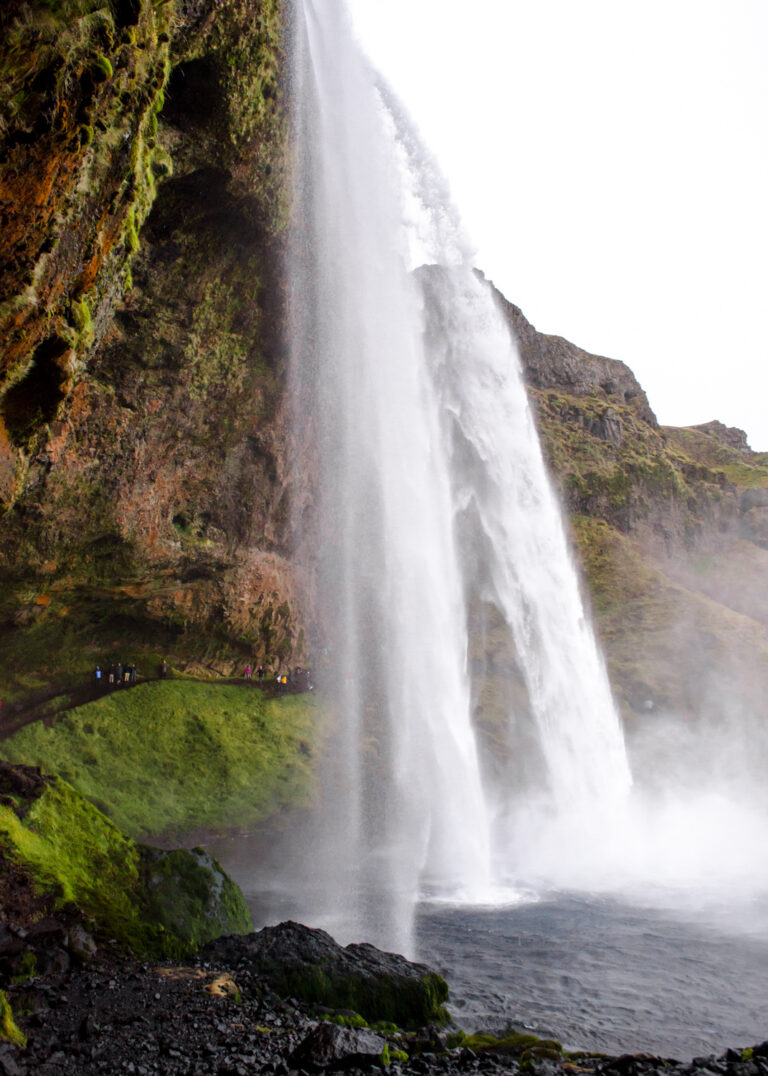
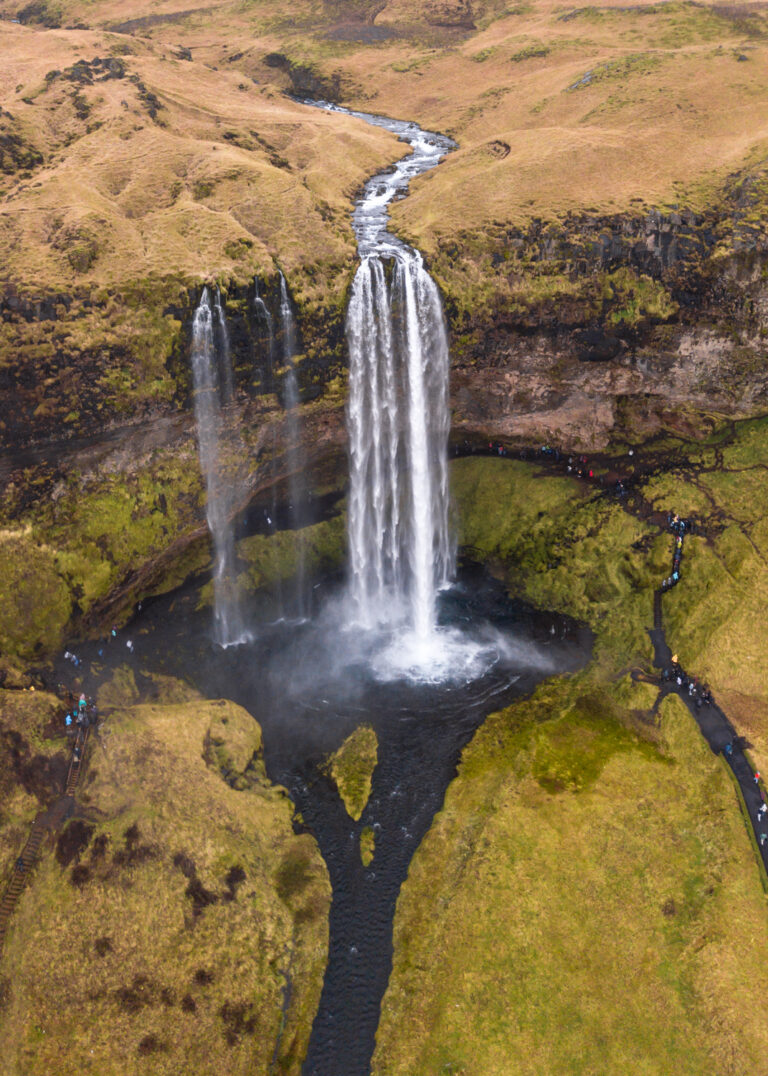
Check out the hidden waterfall of Gljufrabiu too, which can be found after an easy 2km trail from the base of Seljalandsfoss.
4. Seljavallalaug Geothermal Pool
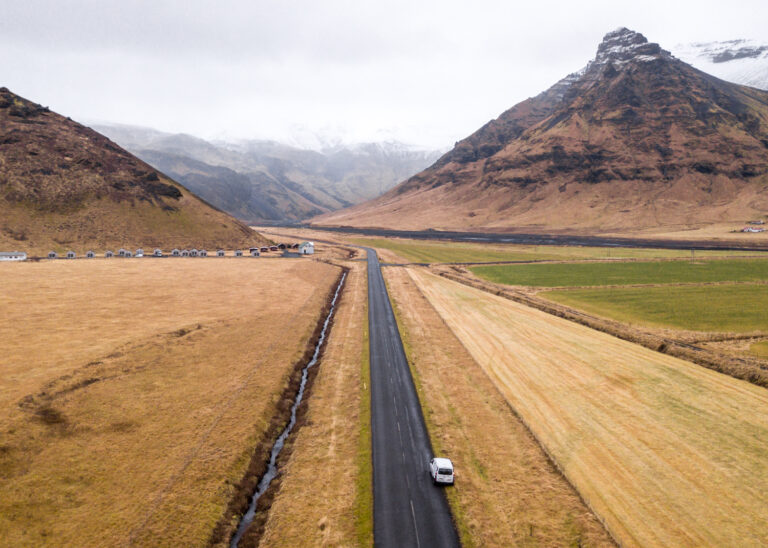
Built in 1923, the next stop is the awesome Seljavallalaug Thermal Pool which is the oldest swimming pool in Iceland and is surprisingly still a relatively hidden gem of the country.
Located 150km from the capital and just 20km down the road from Seljalandsfoss, Seljavallalaug is found in a quiet valley below the Eyjafjallajökull volcano (yes, the one that famously erupted in 2010).
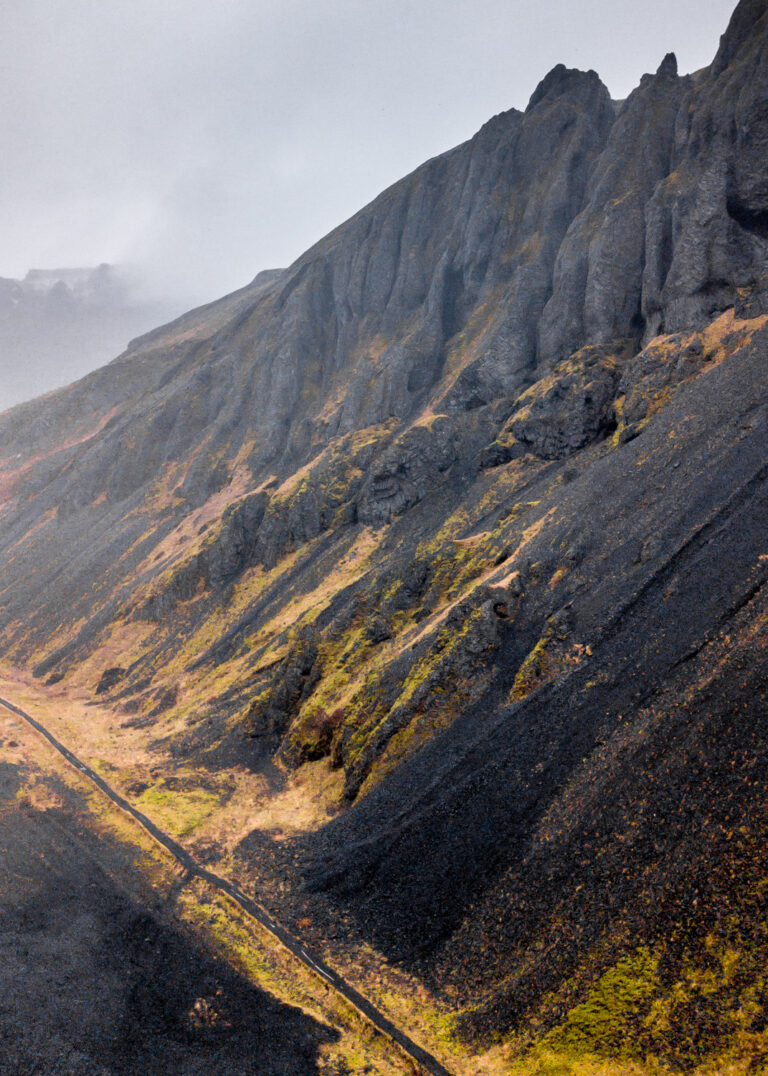
After a straightforward 15 minute hike from the car park you’ll find the secluded little pool that measures 10×25 metres.
It is heated naturally by geothermal waters of the mountain and is totally free to visit, with very basic changing areas on site too. Be warned that the pool is only cleaned once a year, so the bottom is usually covered in algae and is very slippery.
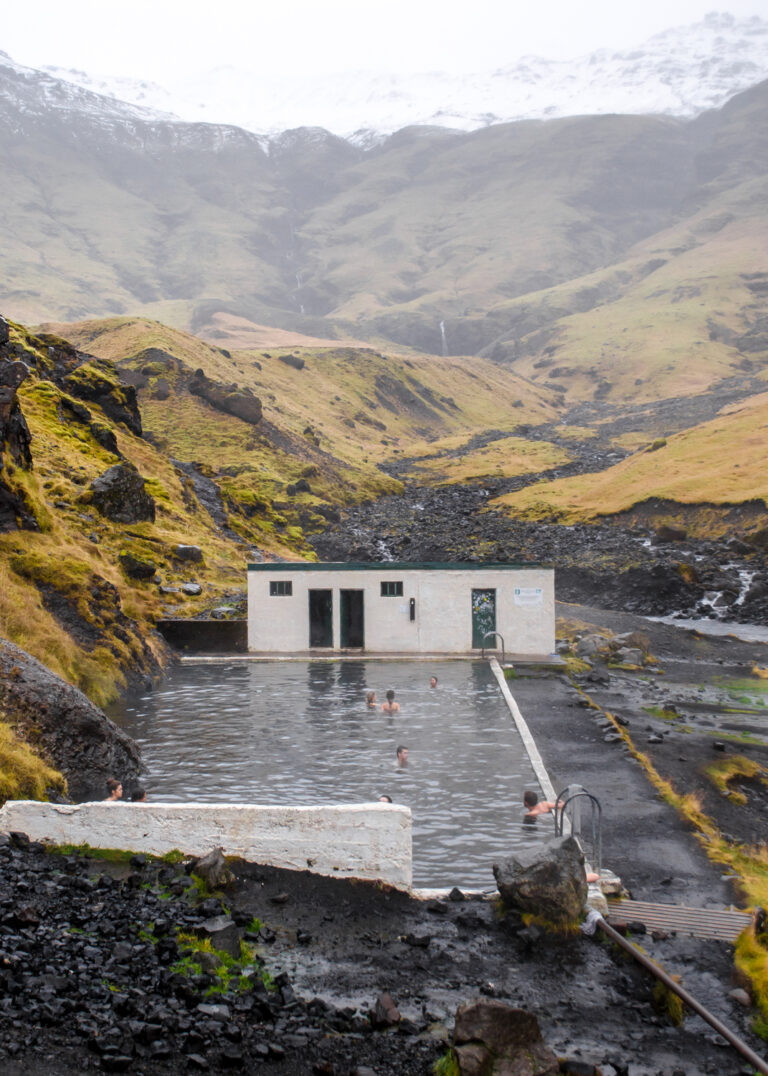

5. Skógafoss
Have you ever even been to Iceland if you haven’t been soaked by this monstrous, mysterious and magical waterfall?
Skógafoss has a whopping drop of 60m, but it’s the width of 25m that makes it stand out.
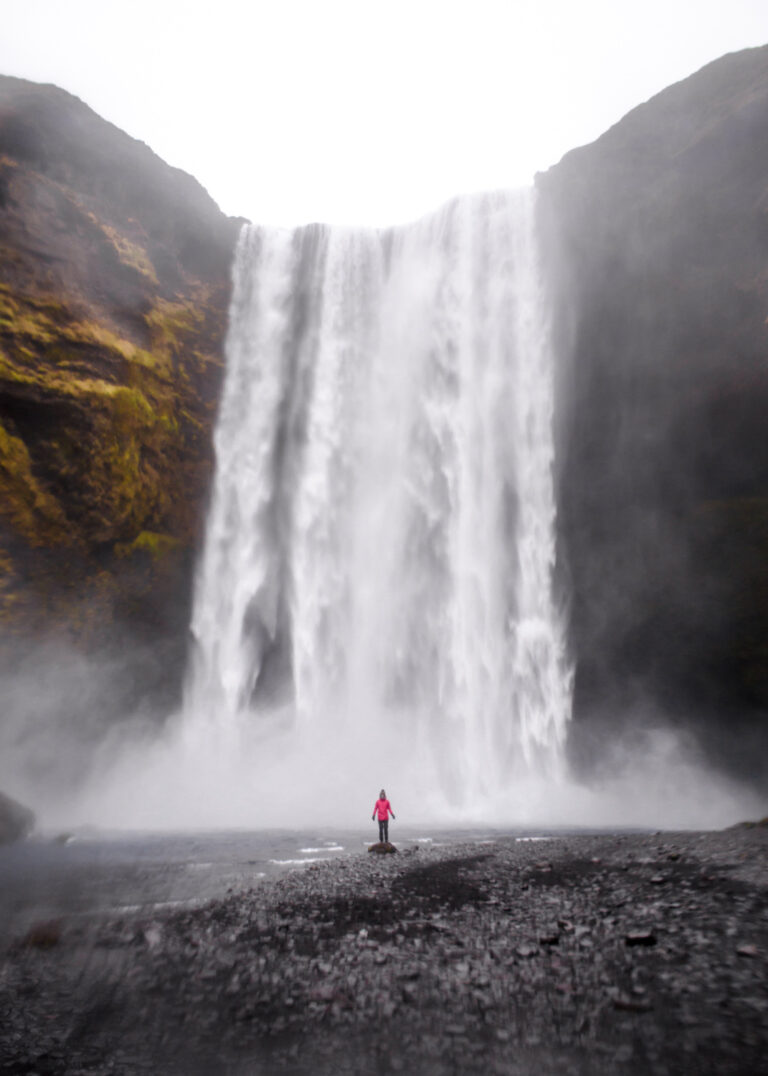
Day 3
Although I probably shouldn’t recommend it, I spent the night in the car park of the DC3 Plane Wreck here after watching sunset at Skógafoss just 11km down the road. It was here that I witnessed the dancing Northern Lights in all their glory.
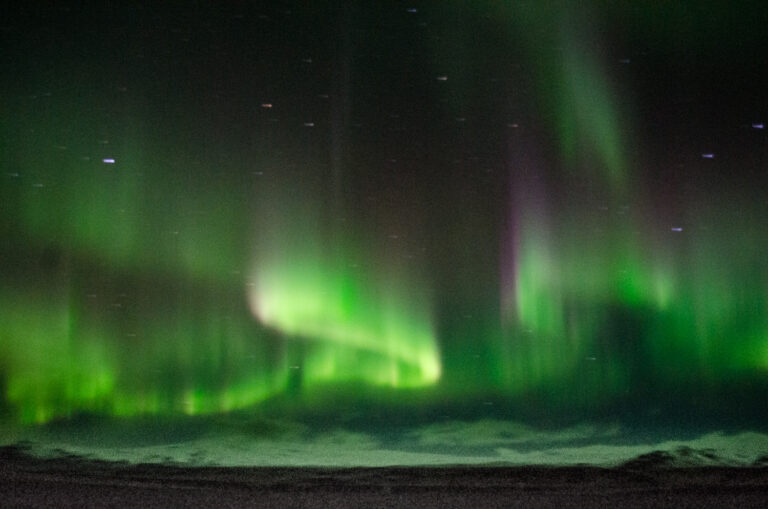
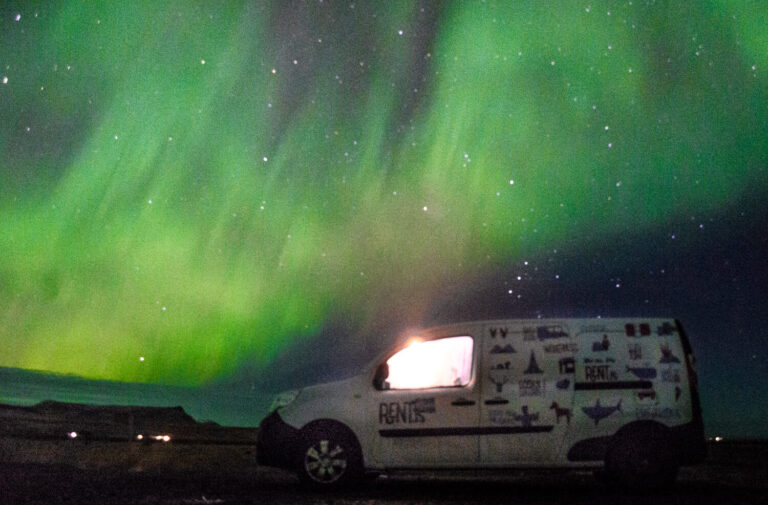
6. DC3 Solheimasandur Plane Wreck
An American DC-3 Plane crashed on the remote black sand beach of Solheimasandur in 1973 when the pilot thought he had ran out of fuel, when in fact he’d just switched to the wrong fuel tank… oops!
The plane remains there to this day as it is the opinion of the Icelandic government that it is neither a landmark nor private property, meaning you are effectively allowed to do what you want while you’re there
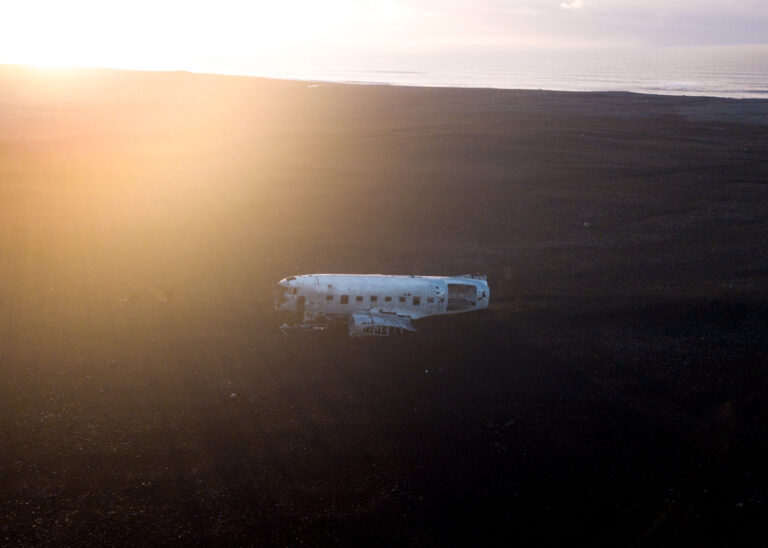
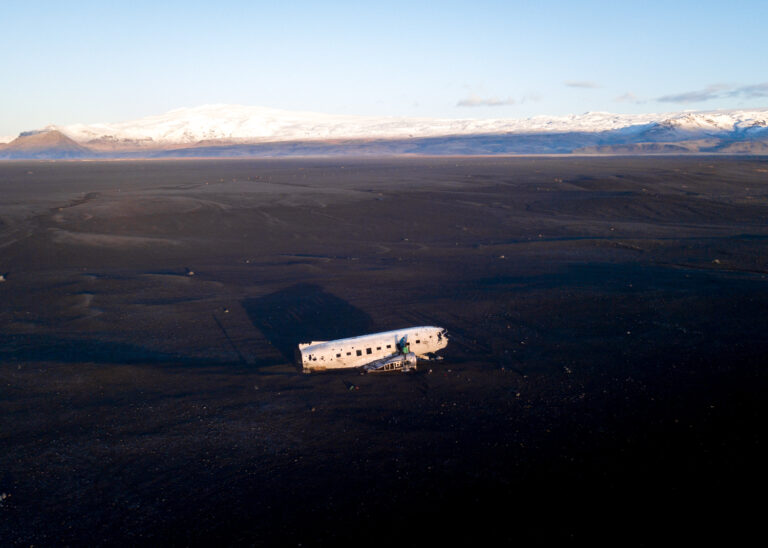
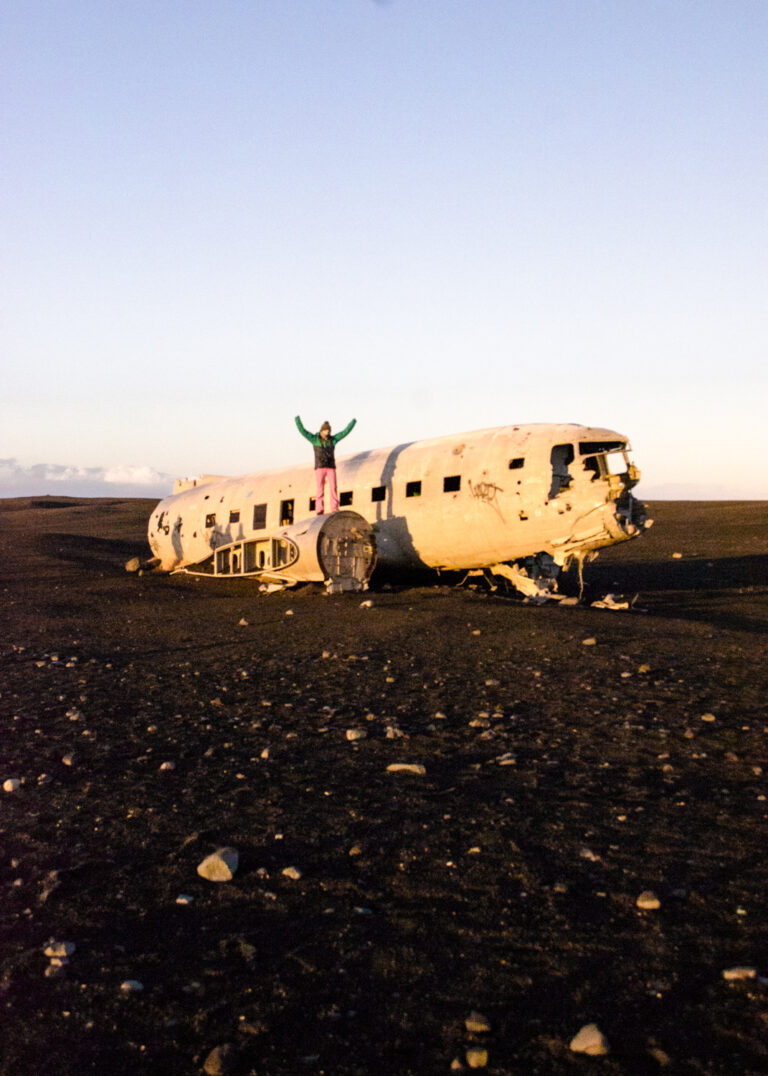
You can go inside and even though it feels super flimsy you can walk on the wings and roof for a cool picture. Some may recognise it from Justin Bieber’s “I’ll Show You” music video, which brought it a lot of fame.
The hike to the wreckage is a 7km round trip and I recommend starting around an hour before sunrise for the best light. There are poles on either side to mark the way and, although it’s a long and relatively uninspiring hike, it’s certainly worth it.
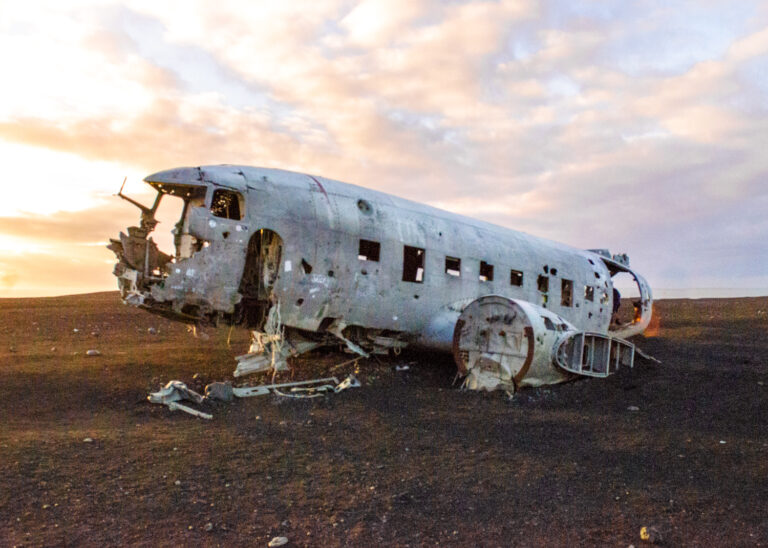
Set off as early as possible and you’ll get the wreck all to yourself like I did. In the summer months you could even camp here.
7. Dyrhólaey Lighthouse
The view from the hilltop Dyrohleay Lighthouse is just jaw-dropping.
Standing on the cliff edge, the black sand beach of Solheimasandur is all the eye can see for miles. If you look far into the distance you can just catch a glimpse of the DC-3 Plane Wreck too.
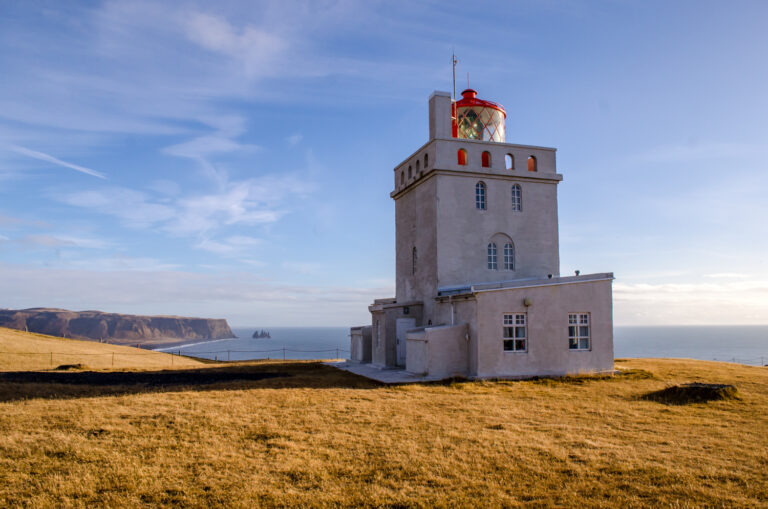
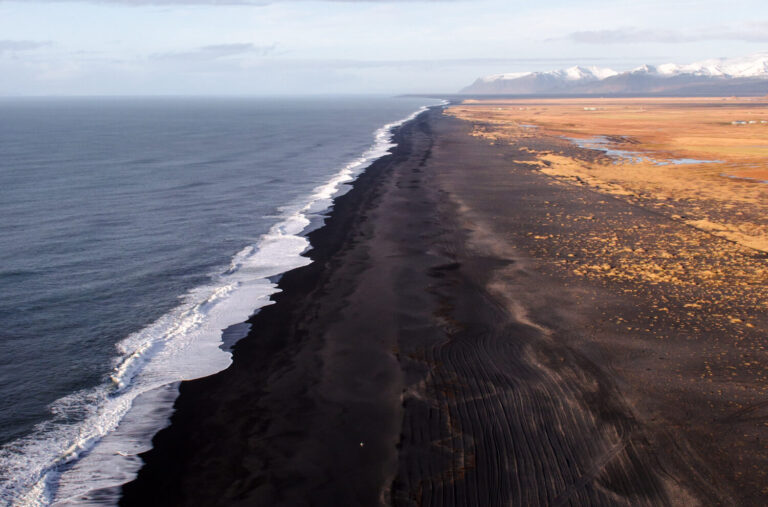
8. Reynisfjara Black Sand Beach
Another world famous location in Iceland is Reynifjara Beach, which was probably the busiest place on my entire trip – no thanks to Game of Thrones.
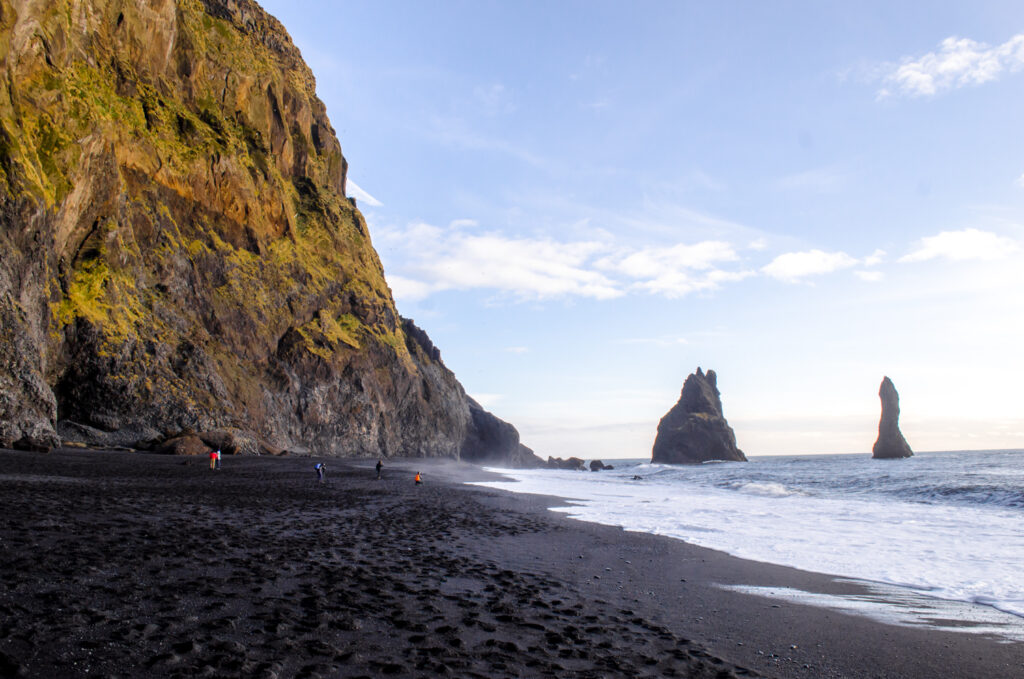
As soon as you leave the car park you can see the massive basalt columns that line the beach and surround Hálsanefshellir Cave, which is a really impressive sight. Further down the beach there are some large sea stacks and very large, crashing waves.
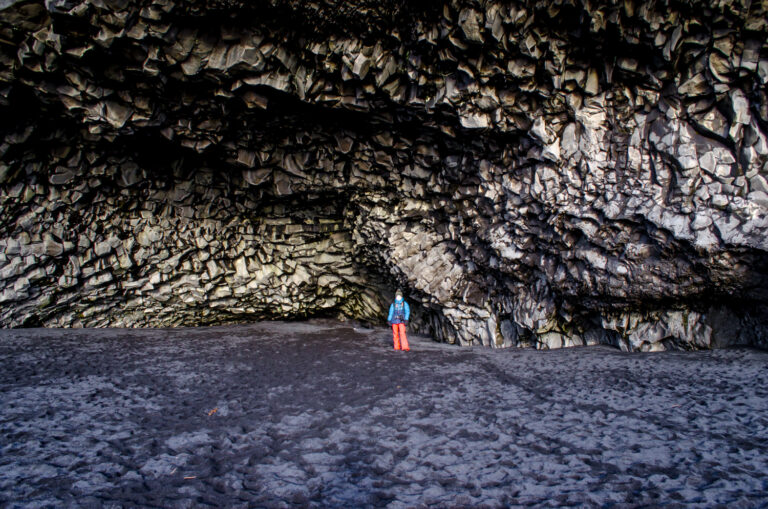
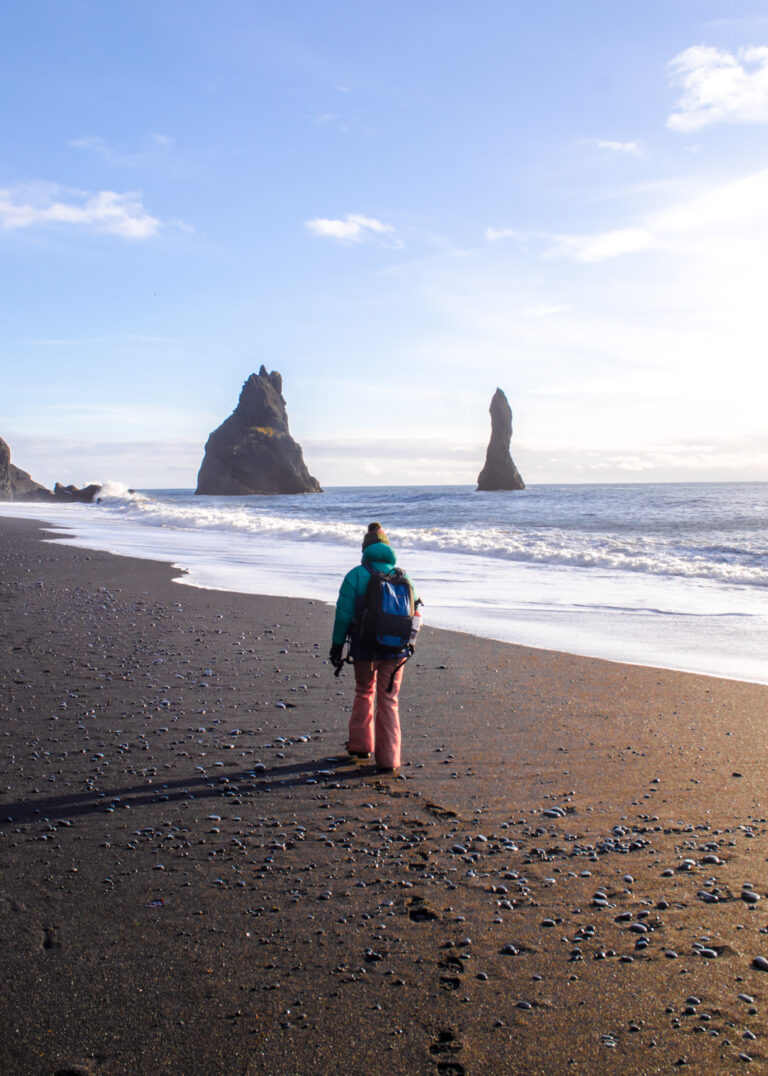
It’s important to be cautious of the sneaker waves here. Every so often there will be a large freak wave which are notorious for sweeping unwitting tourists out into the rough sea. At that point, its very hard to fight back to land.
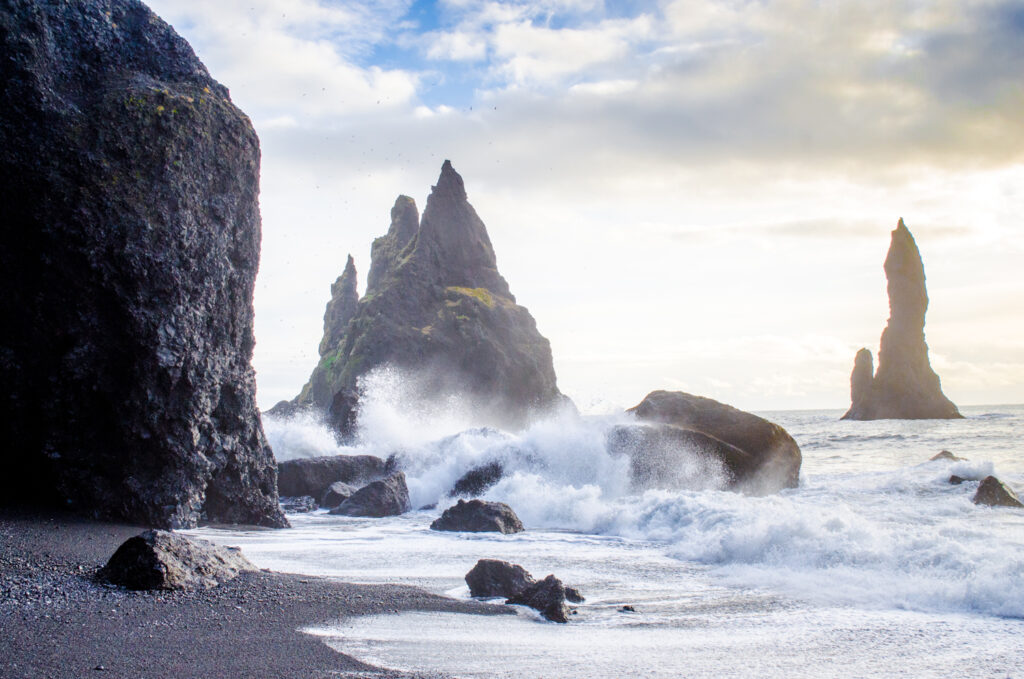
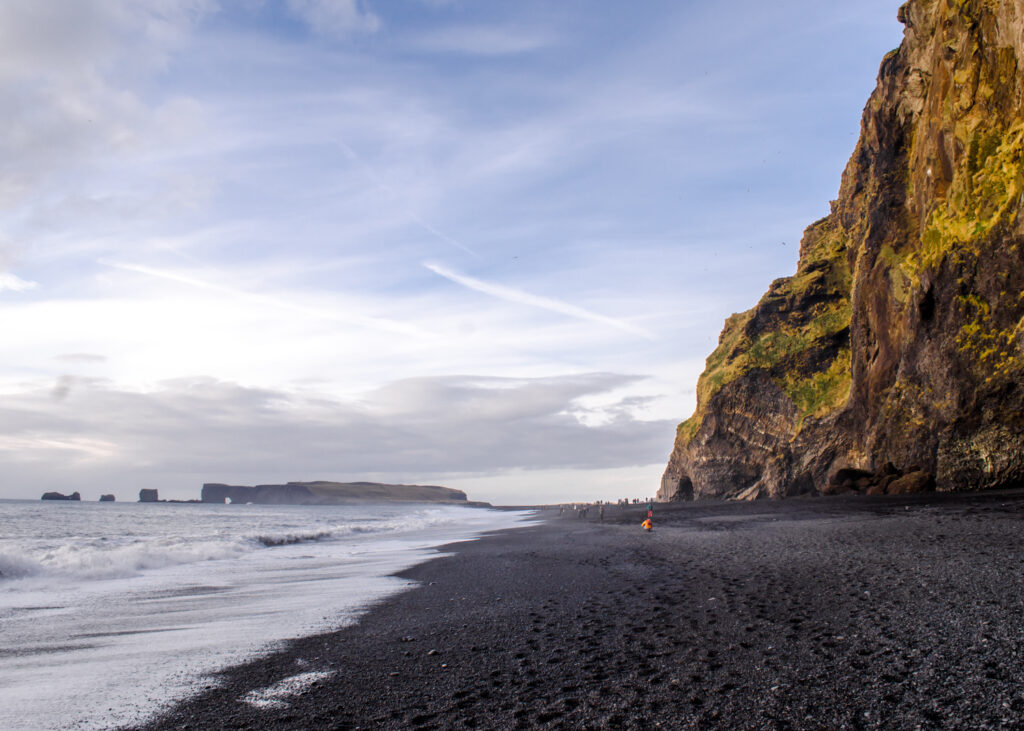
9. Vík
Just 11km from Reynisfjara Beach, the village of Vík is the perfect stop to do some shopping, charge anything that needs charged at the petrol station and visit the stunning red church called Reyniskirkja.
Reyniskirkja is a wooden church with an iconic red roof that overlooks Vík and dates back to 1929. Here, you can also see the enormous basalt rock formations of Reynisfjara beach from the other side.
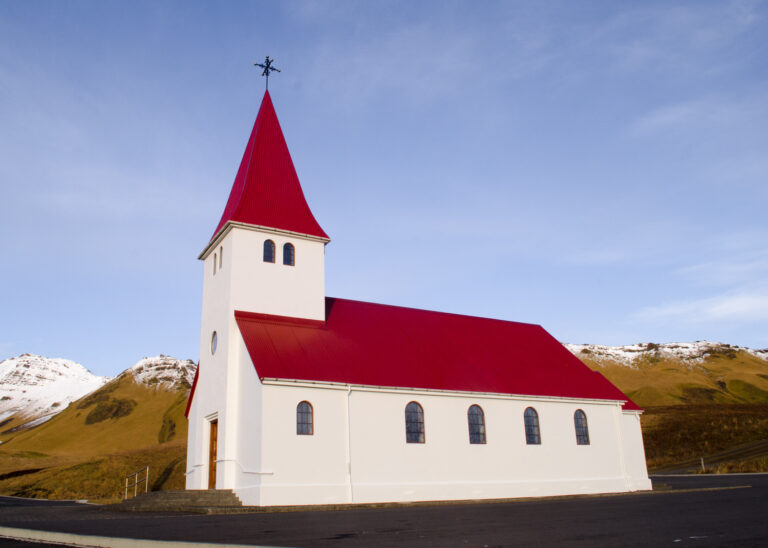
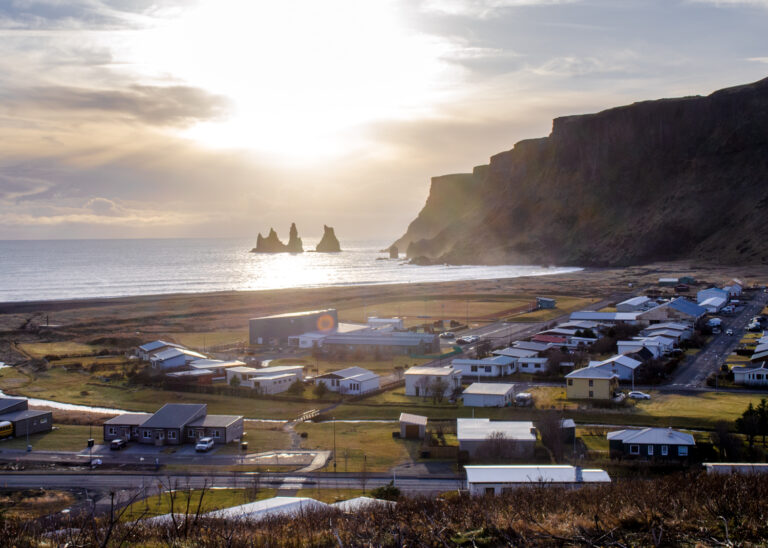
Day 4
10. Lómagnúpur Mountain
Some 105km from Vík stands Lómagnúpur Mountain which rises to 2506 feet (764 meters) and is among Iceland’s most photographed mountains.
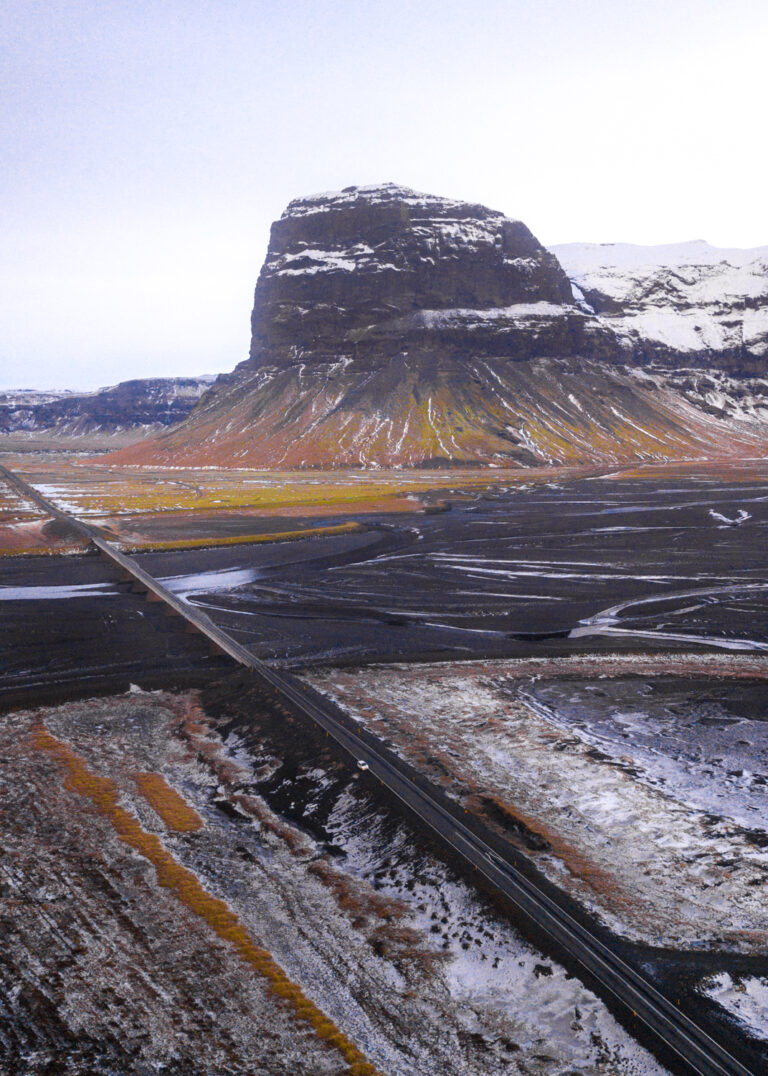
The mountain is so huge that sometimes it can be seen from over 30km away and it is the perfect location to stretch your legs and take up some space in your camera roll.
In summer you can hike up to the highest point, but not in winter.
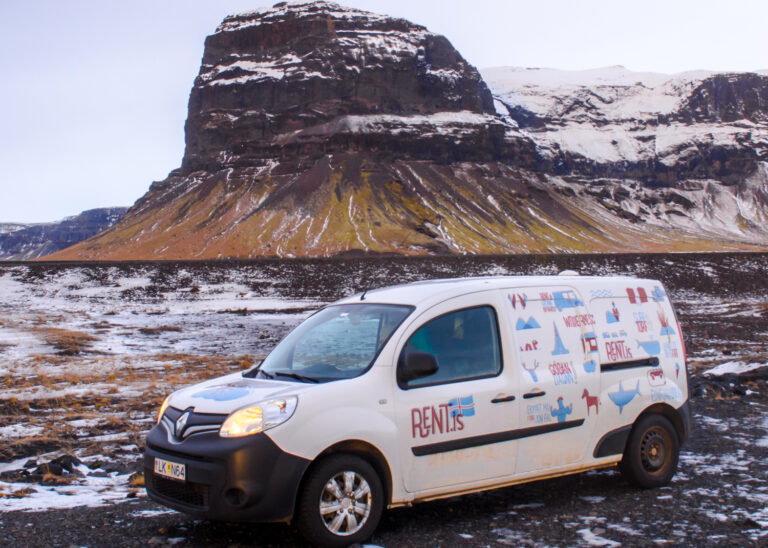
11. Svartifoss
Another hidden gem on Iceland’s south coast and certainly one of the country’s most unique waterfalls is Svartifoss. I mean, this beast doesn’t even make it into the Lonely Planet’s guide to Iceland, and that’s something I’ll never understand!
The waterfall itself has a satisfying 20m drop over a cliff surrounded by huge basalt columns.
As an avid waterfall chaser, I can confidently say that Svartifoss is one is one of my all-time favourites.
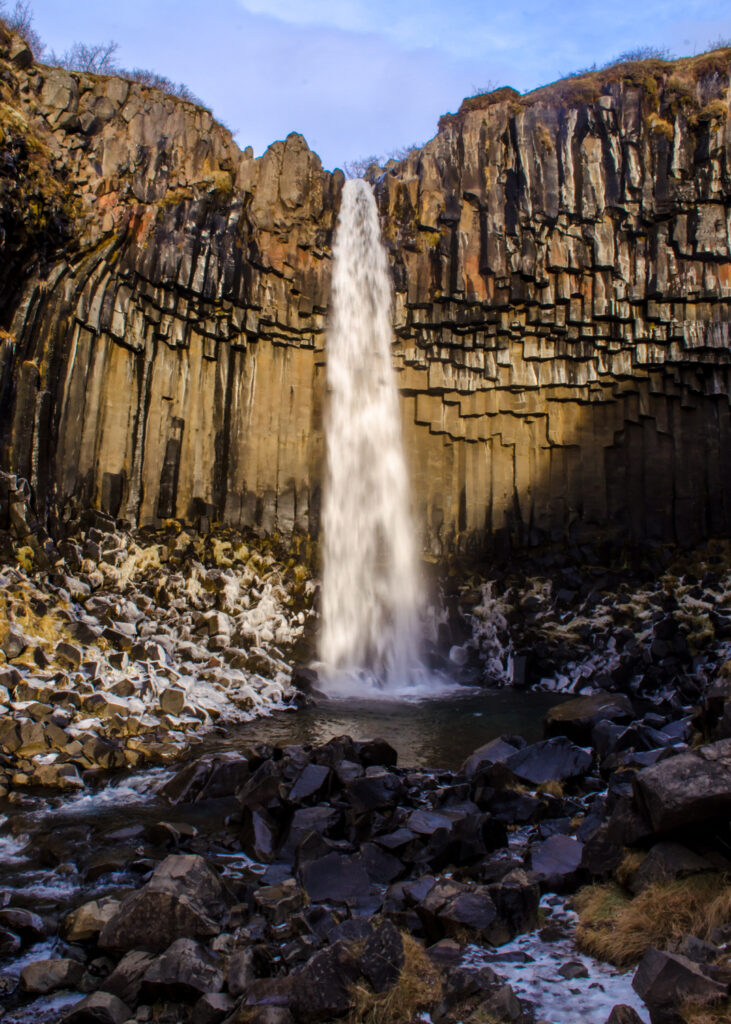
Situated 40km from Lómagnúpur in the Skaftafell Nature Reserve and Vatnajökull National Park here, the trail from the car park takes you 1.5km uphill past three smaller waterfalls called Magnus’, Dog’s and Thieves’, making the hike that bit more awesome.
The area is notoriously windy which can make it pretty difficult to get up, especially if it’s icy, but this is certainly not one to skip!
12. Jökulsárlón Glacial Lagoon
Jökulsárlón is a 25km² glacial lagoon filled with house-sized chunks of ice that have broken free from Breiðamerkurjökull, a sub-glacier of the famous Vatnajökull (the largest icecap in Europe).
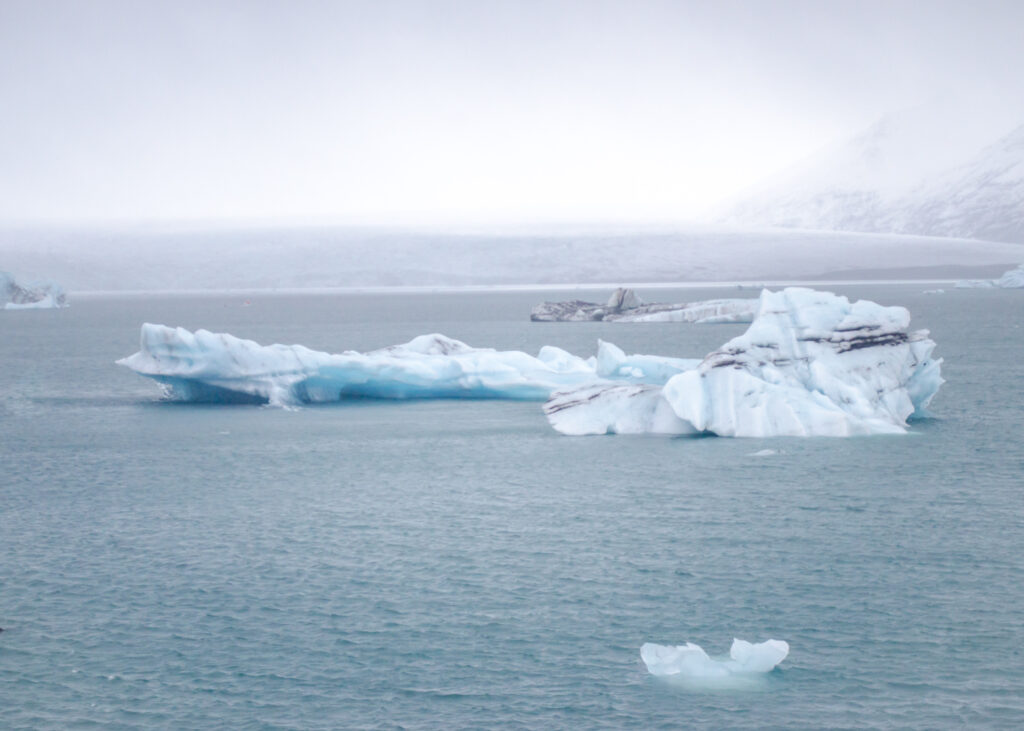
It is located on the Ring Road between Hofn and Skaftafell here, and is a mind-boggling place. The immense size of the ice formations is awesome.
From here, cross the road and visit Diamond Beach to see what happens when the bergs leave the lagoon.
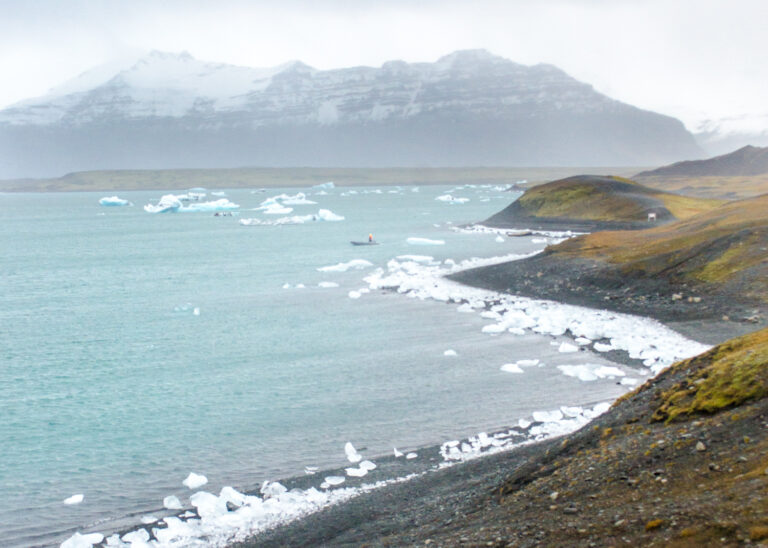
13. Diamond Beach (Breiðamerkursandur)
Diamond Beach is a large black sand beach where the icebergs from Jökulsárlón are laid to rest.
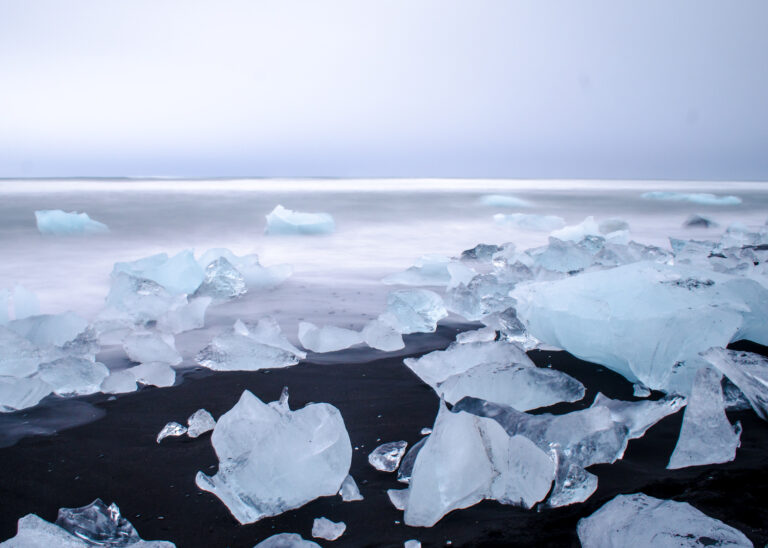
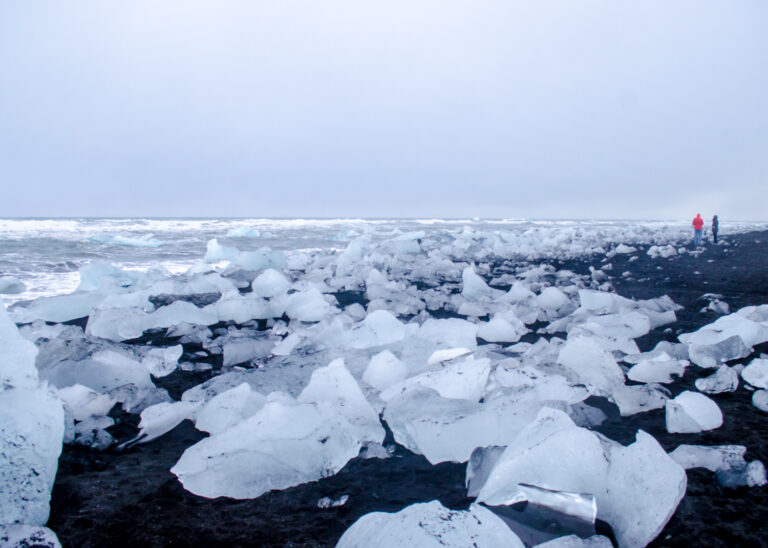
After the colossal bergs leave the lagoon they are washed up on the shores of Diamond Beach in tiny chunks and fragments, creating one of the most unique beaches in the world.
The contrast between the blues of the ice and the blacks of the beach are fascinating and are sure to wet every photographer’s appetite.
14. Hofn
In southeast Iceland, 80km from Diamond Beach, lies the small fishing village of Höfn where just 2,000 people reside.
I took this opportunity to go swimming in nice heated outdoor pool in town for 1050ISK (£6) and get an insight into the more local side of Icelandic life in a small village. One thing’s for sure, I wasn’t prepared for the amount of genitals that would be out in the open, but that’s for another day!
There is a small campsite in Höfn which is perfect for your 4th night’s sleep. Find it on Google Maps here.
Day 5
By day 5 of this itinerary you will have escaped the crowds of day trippers from Reykjavik and from here on most stops will be nice and quiet. There will be lots and lots of miles in the van today, so strap in and enjoy the ride!
15. Stokksnes Peninsula
People visit the Stokksnes Peninsula is to see the dramatic jagged peaks of Vestrahorn Mountain towering over the famous black sand beach.
When I visited Stokksnes the conditions were so violent and the visibility so poor that I didn’t even catch a glimpse of the beach or Vestrahorn Mountain so sadly I have no photos. Check out other visitor’s photos here.
This was the only thing on my trip that I didn’t get to see, which just means I’ll have to come back one day to try again… what a shame!
16. Seyðisfjörður
There’s no denying it, the drive between Stokksnes and Seyðisfjörður is a long one, winding 275km through the eastfjords before the mountain pass down to Seyðisfjörður 4 hours later.
You’ll drive past small roadside waterfalls and if you’re lucky you’ll see some reindeer. Every time I tried to get a shot of them they ran away.
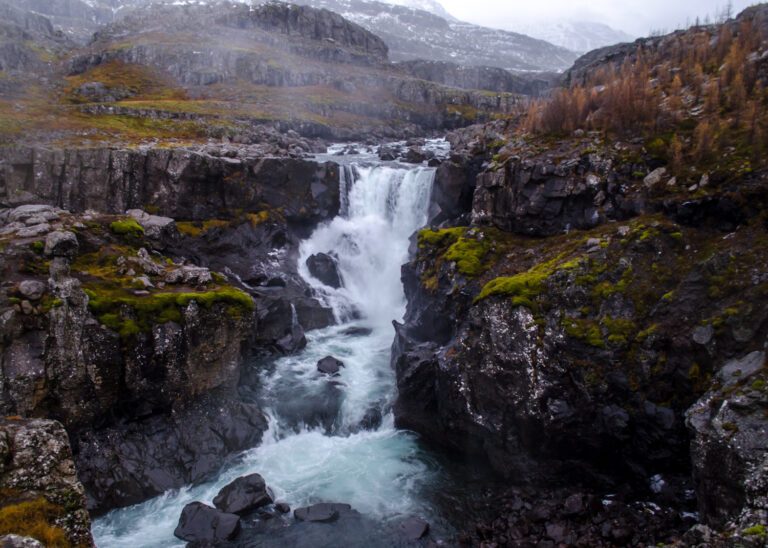
Nestled in at the corner of a mighty fjord, Seyðisfjörður is a small fishing town in east Iceland that is home to around 700 people.
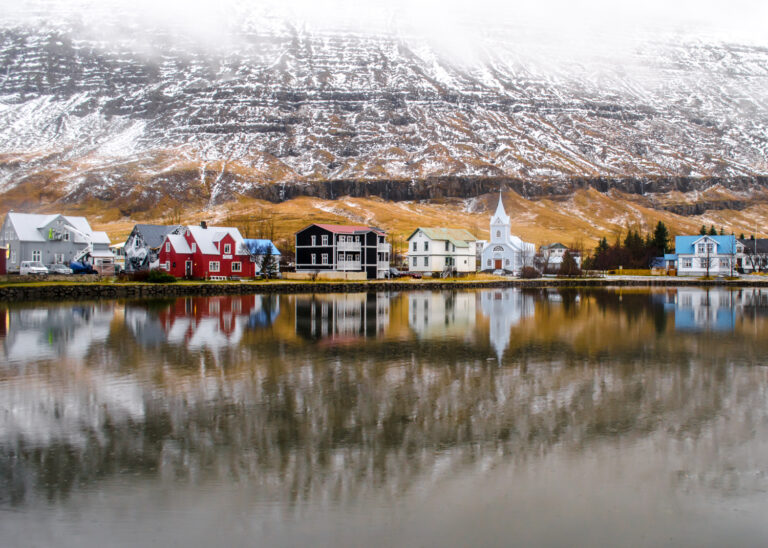
If you have time, Seyðisfjörður is a wonderful detour to take to explore the cultures of an Icelandic fjord town.
While wandering around, make sure to stop at the very recognisable and instagrammable blue church in town and the equally photogenic rainbow road leading up to it.
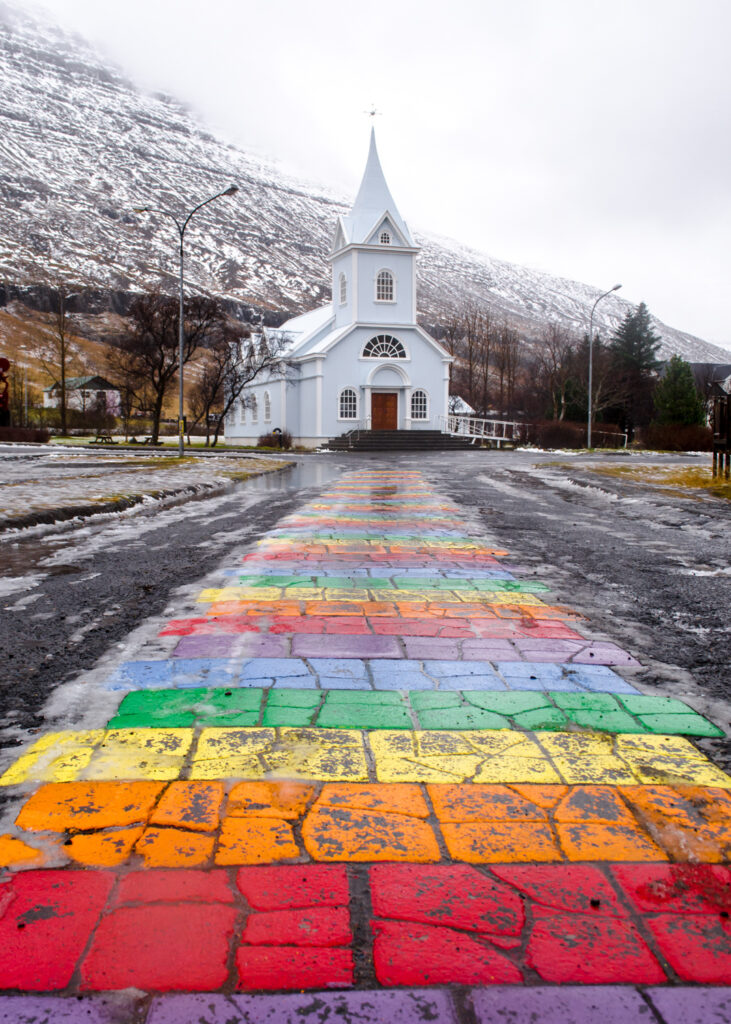
Day 6
Cover the north of Iceland on day 6 with around 160km of driving.
17. Dettifoss
Now in the vast, moon-like landscape of northern Iceland, the scenery changes dramatically as you approach Dettifoss from Seyðisfjörður 190km away.
Dettifoss is the most powerful waterfall in Europe based on volume of water and measures a massive 100m wide with a 44m drop.
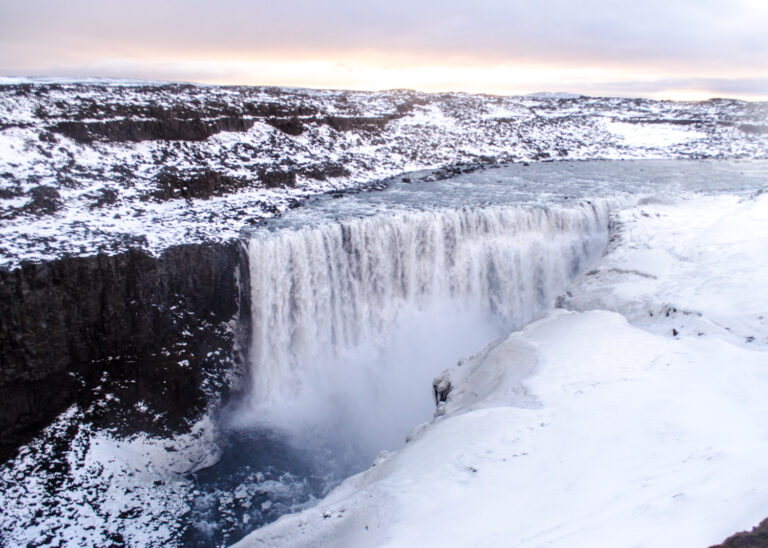
You can park at either side of the falls and then take on the short but slippery walk to get there, where there’s a choice of viewpoints.
Allow a fair chunk of time to take in this spectacular sight and make sure to check out Selfoss just up the canyon too.
18. Hverir Geothermal Area
Hverir, or Námafjall, is another one of Iceland’s many locations where you feel closely connected to the raw power of Earth.
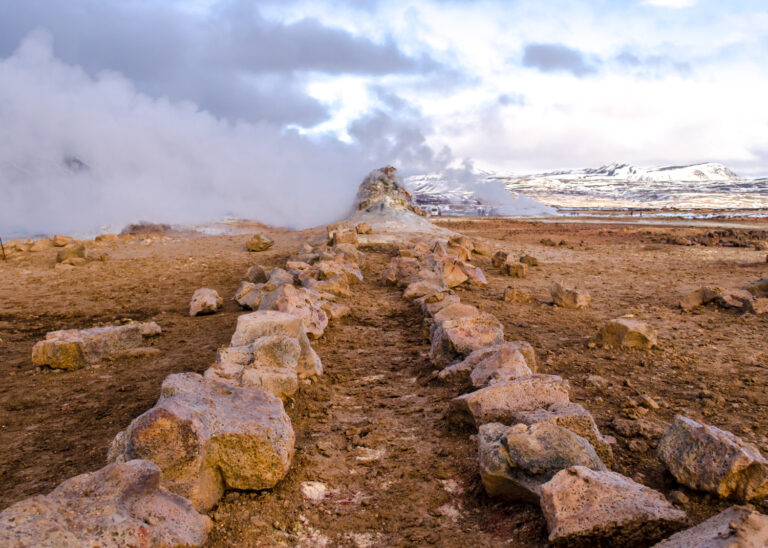
Situated just off the Ring Road in the volcanic north of the country, 60km from Dettifoss, the journey between the two feels like you’ve driven from the moon and arrived on Mars!
At the foot of some extinct volcanos, Hverir Geothermal Field is a surreal area of boiling mud pools, smoking fumaroles and large steam vents. Prepare for the overwhelming smell of egg due to the high sulphur concentration!
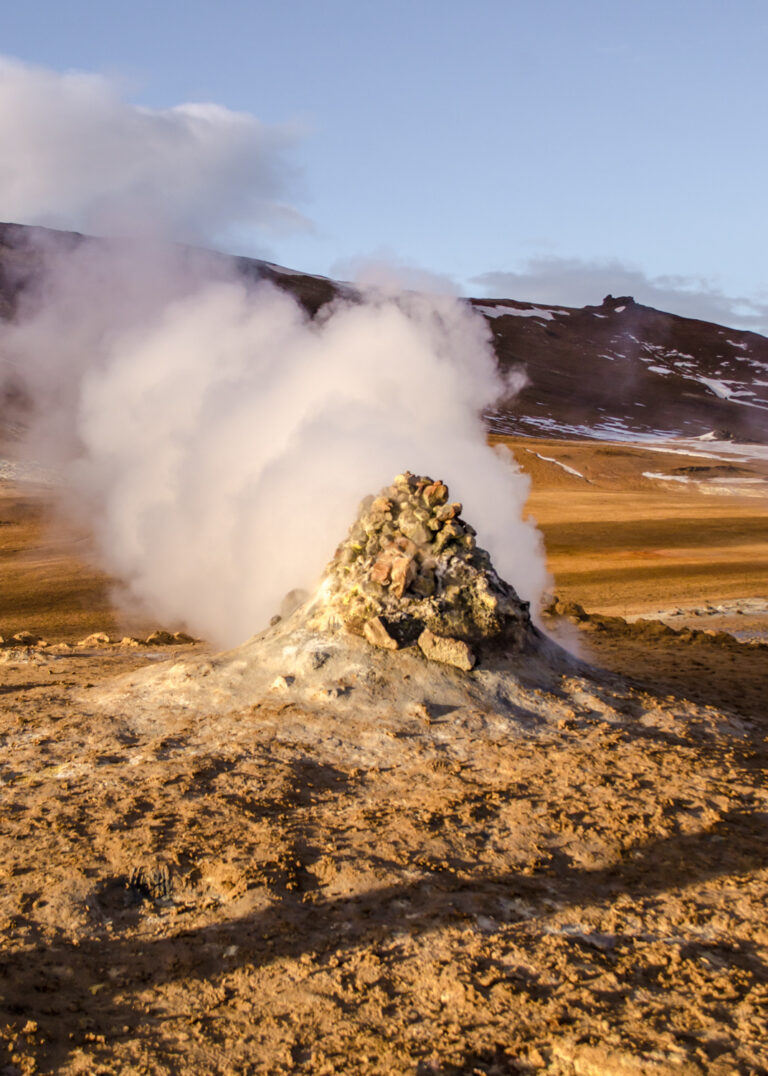
If you’re feeling up for it there’s also a 2.5km trail leading up to Mount Námafjall for great views over the surrounding region.
19. Myvatn Nature Baths
Okay, so everyone has heard of the world famous Blue Lagoon, but did you know there are over 25 other geothermal pools that you could visit in Iceland?
As previously promised, here is your alternate budget option to the Blue Lagoon.
The Myvatn Nature Baths are just around the corner from Hverir and have over 3.5 million litres of 38 degree water, where the facilities are much the same as the Blue Lagoon. Myvatn is also far less crowded and cheaper as the Blue Lagoon is 5720isk in winter (£33/$44) whereas Myvatn is 3500isk (£20/$26).
20. Hverjfall crater
Hverfjall volcano erupted 4500 year ago and has one the largest craters in the world at 1km in diameter.
You can hike up to the rim in around 15 minutes for an epic view over Lake Myvatn and the surrounding geothermal lava fields.
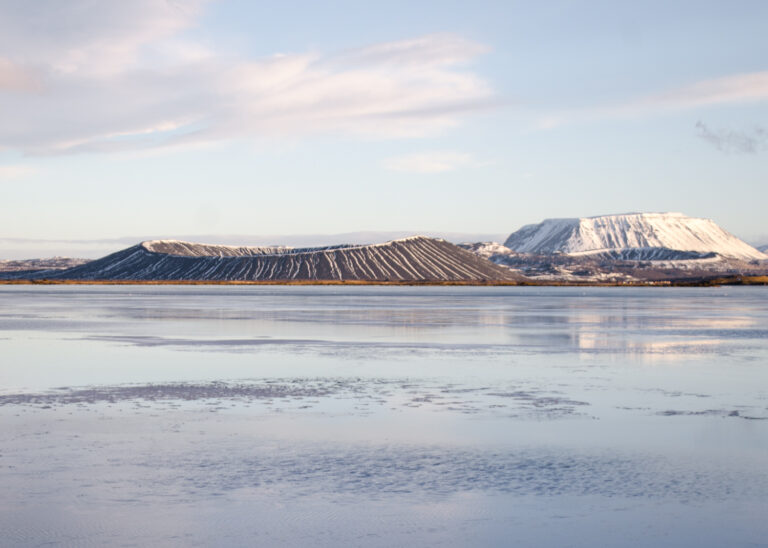
21. Godafoss
Godafoss, meaning “Waterfall of the Gods”, is one of the country’s biggest waterfalls and is located 50km from Hverjfall crater here.
Dropping 12 metres and spanning 30 metres in a horseshoe shape, you really can’t drive the Ring Road and not pull over and admire this waterfall. The car park is right beside the road and it’s also only a 1 mile walk from there.
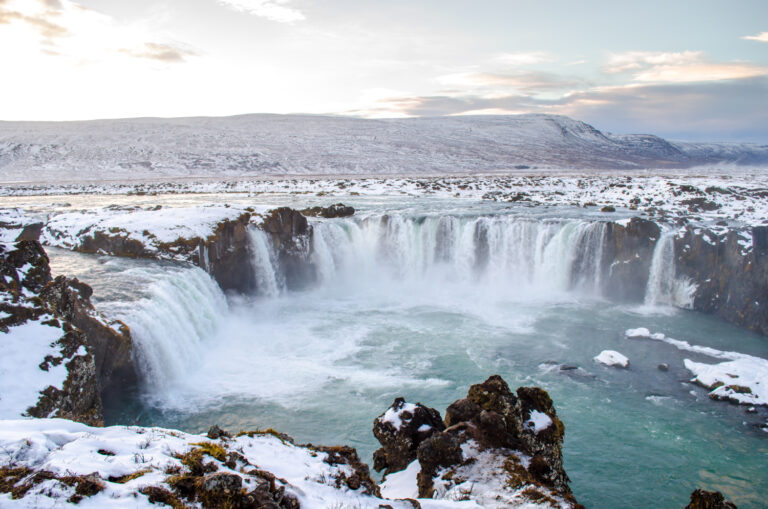
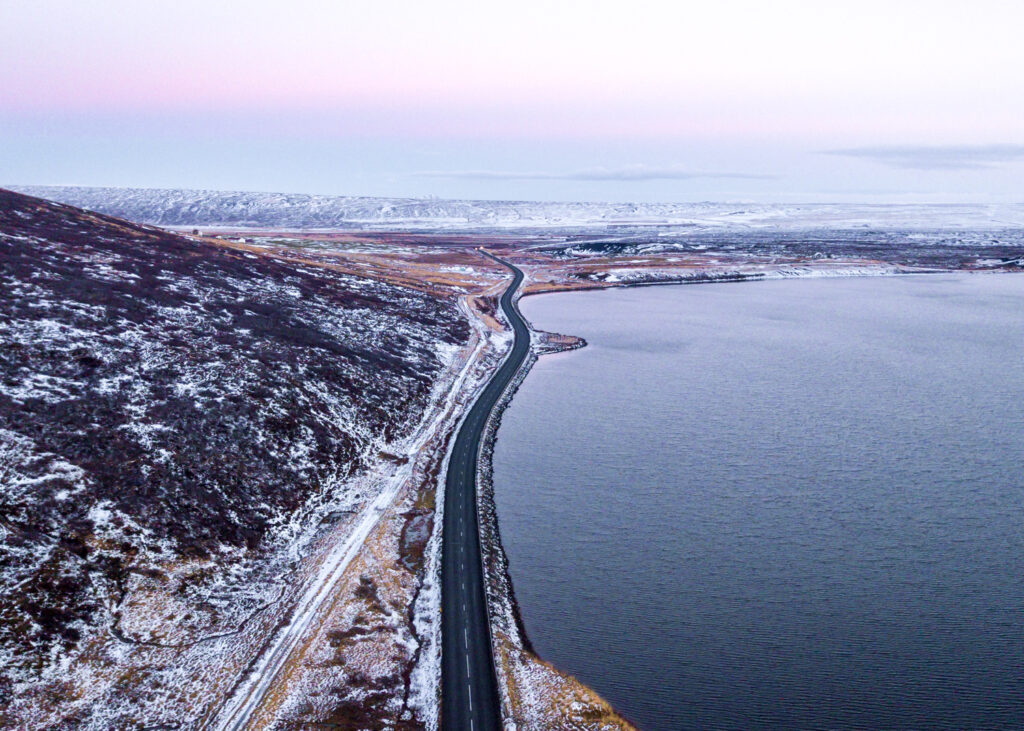
Day 7
Between Godafoss and Hvítserkur is Iceland’s second largest city, called Akureyri, where you can spend the night.
If you fancy a shower or just a night not in the campervan, try this backpacker hostel!
22. Hvítserkur Sea Stack
I don’t know what it is about sea stacks, but I love them.
260km from Godafoss is Hvítserkur, also known as “The Troll”, which is a 15 metre tall volcanic dyke believed in Icelandic folklore to be a troll that was turned to stone after it was caught stealing from a church.
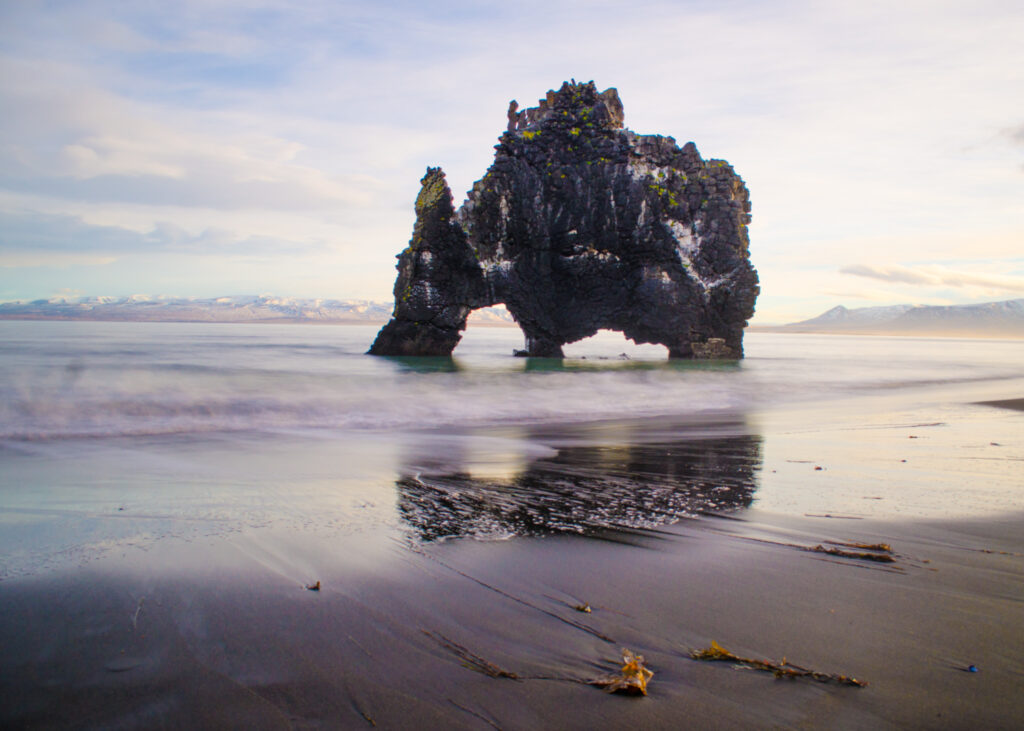
It is located on the Vatnsnes Peninsula in north-west Iceland and requires taking a slight 25km detour off the Ring Road to reach.
The 25km detour is along an extremely bumpy, unsealed F-road which can be a real hub-cap killer. I’d never passed as many broken hub-caps on a single stretch of road in my life! It’s doable though, and the bouncy drive adds to the sense of reward when you get there.
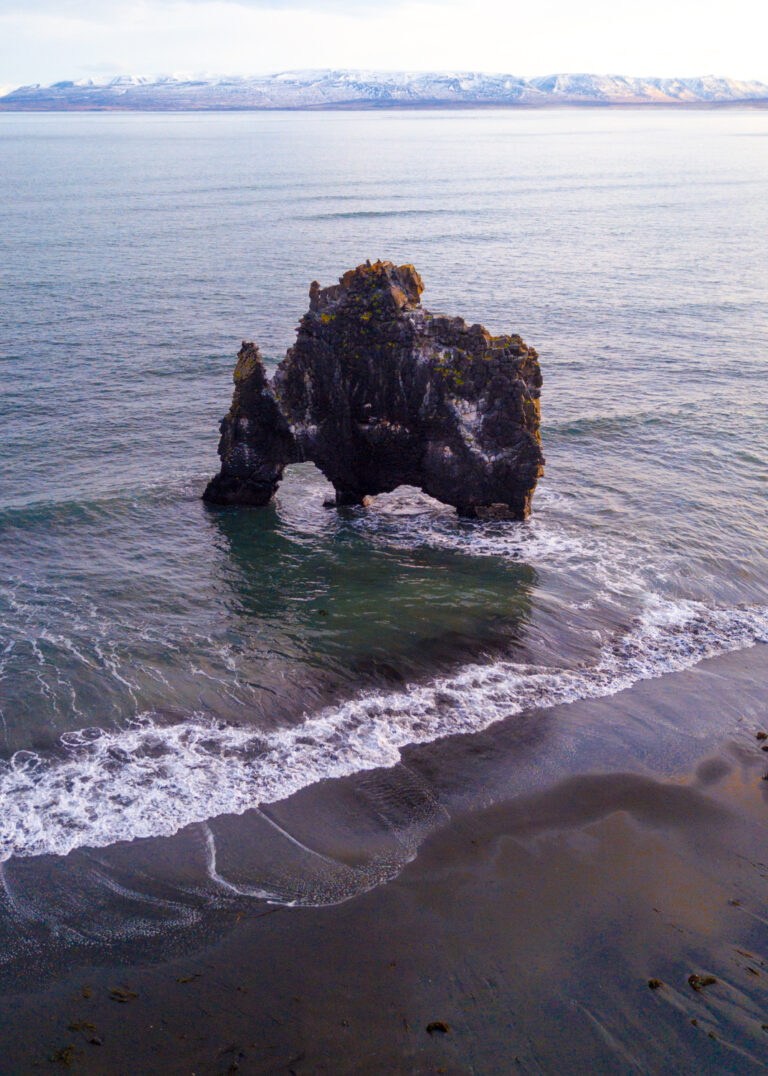
23. Kolugljufur Canyon
This 1km long gorge is very well hidden and is just 38km from Hvítserkur. Find it 5km off the ring road here.
In some places the canyon reaches 50m deep and hosts plenty of viewpoints as well as the mighty Kolufossar waterfall – the perfect place to break up the journey and have lunch with a view.
You’ve got to love an off the beaten path spot that isn’t in the guidebooks!
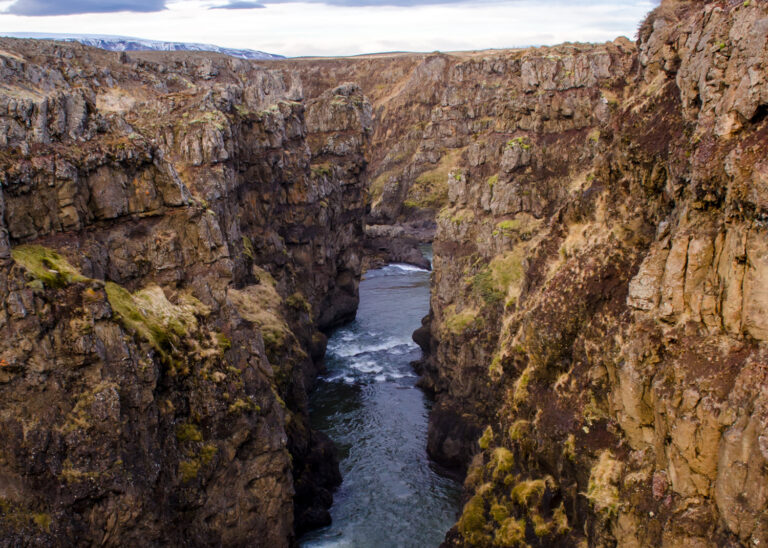
24. Grundarfjördur
Finish your day with a big 270km push to Grundarfjördur for the night before exploring the Snæfellsnes Peninsula the next day!
If you arrive in time you might be able to catch a glimpse of Kirkjufell at sunset like I did, but if not you’ll just have to bottle the excitement for another day!

Day 8
A day on the Snæfellsnes Peninsula
25. Kirkjufellfoss
One of the most recognisable sights in all of Iceland, Mount Kirkjufell (meaning “Church Mountain”) is a world famous, 463m tall icon of the country located on the Snæfellsnes Peninsula, just past the fishing village of Grundarfjördur.
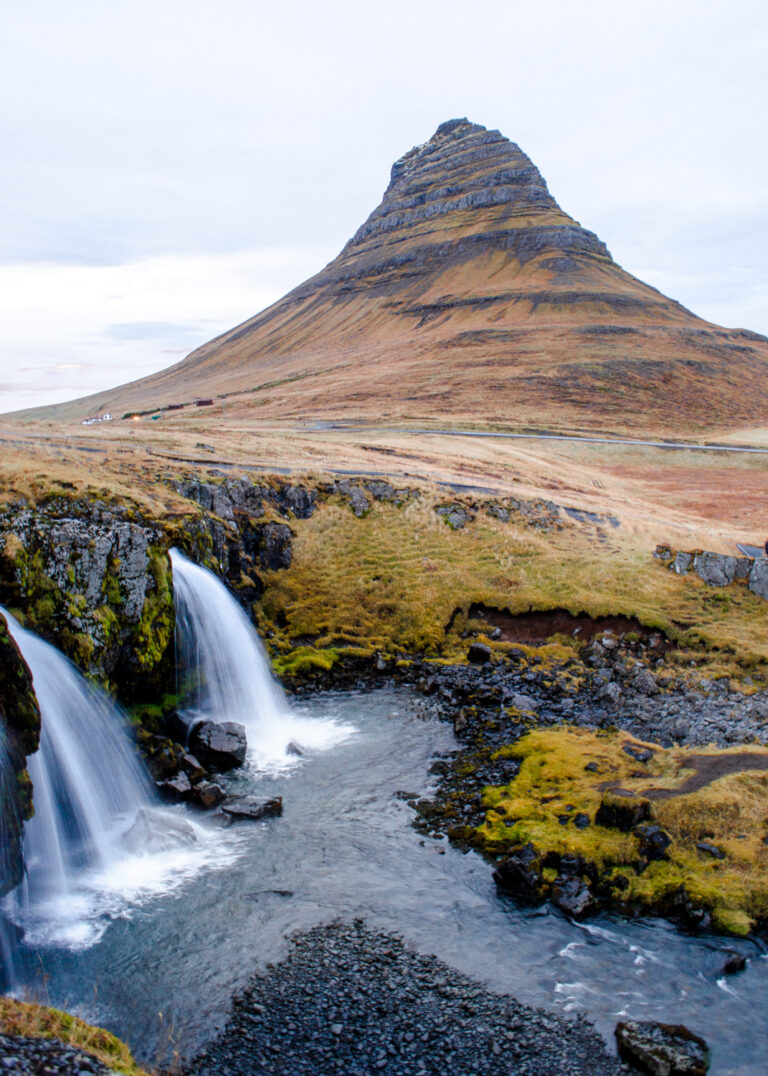
Well, at different angles Mt Kirkjufell appears very differently, but the view from Kirkjufellfoss is the one you’re looking for.
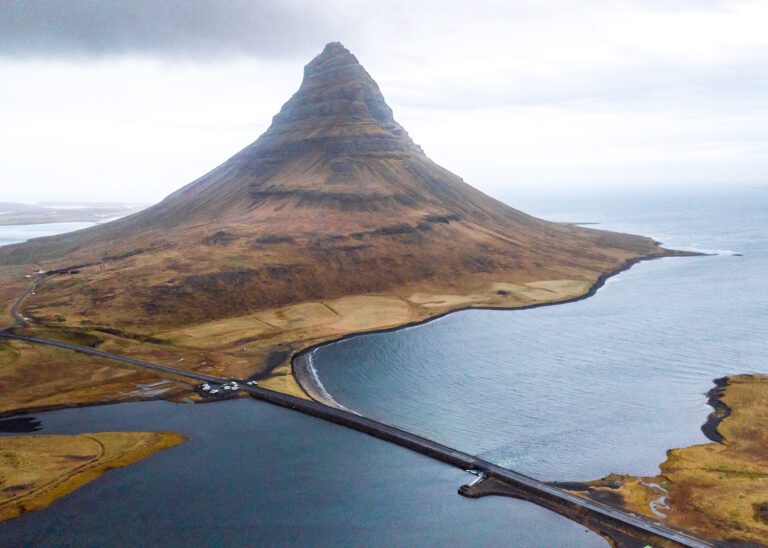
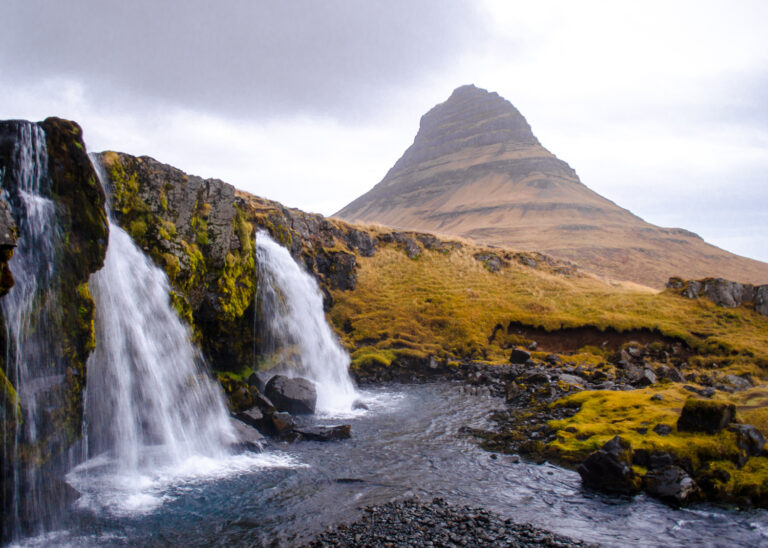
Kirkjufellfoss (the waterfall) provides the perfect foreground for all your pictures of the famous mountain.
It is one of the most photographed viewpoints in the country.
26. Arnarstapi Natural Bridge
The magical Snæfellsnes Peninsula isn’t done with you yet, as the Arnarstapi region has a lot on offer.
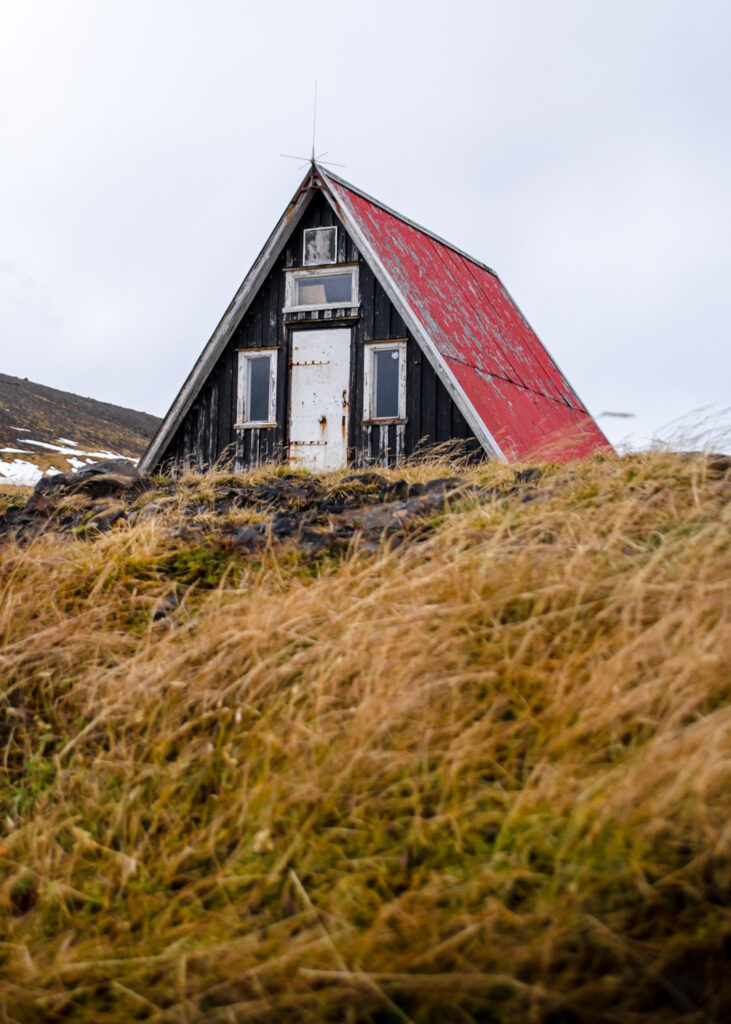
After the 50km drive from Kirkfufell, wander around the cliffs at Hellnar Viewpoint and see the cool basalt columns and the hidden natural bridge while Mt Stapafell looks over you.
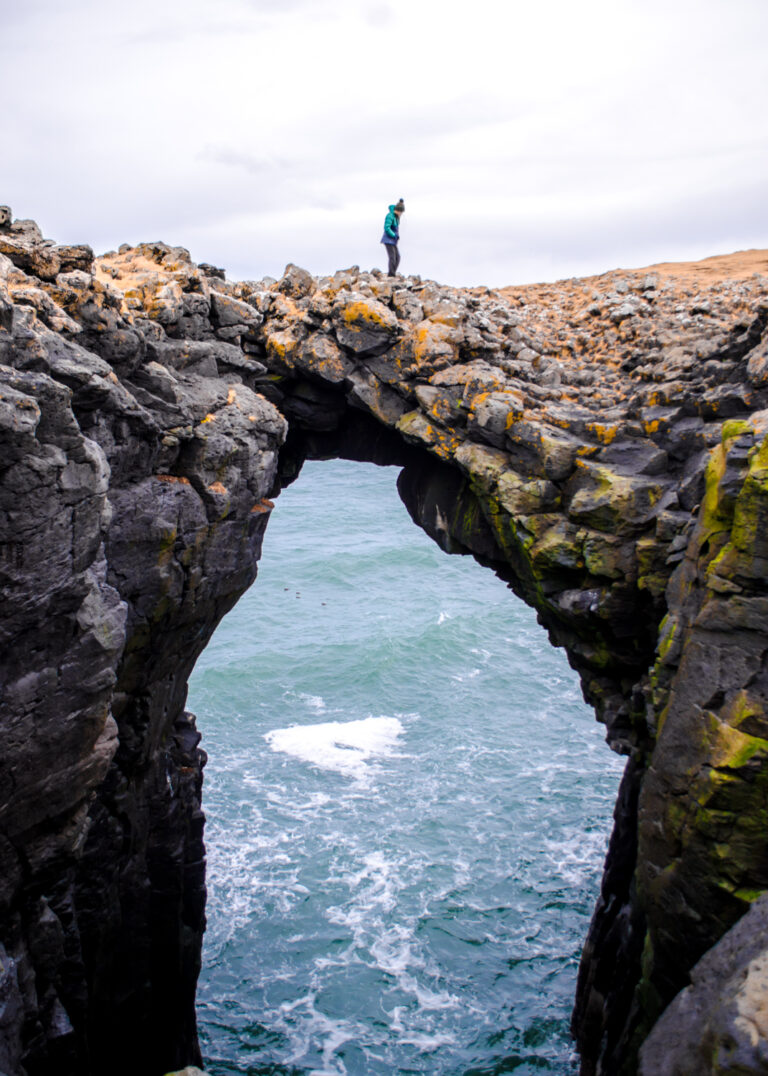
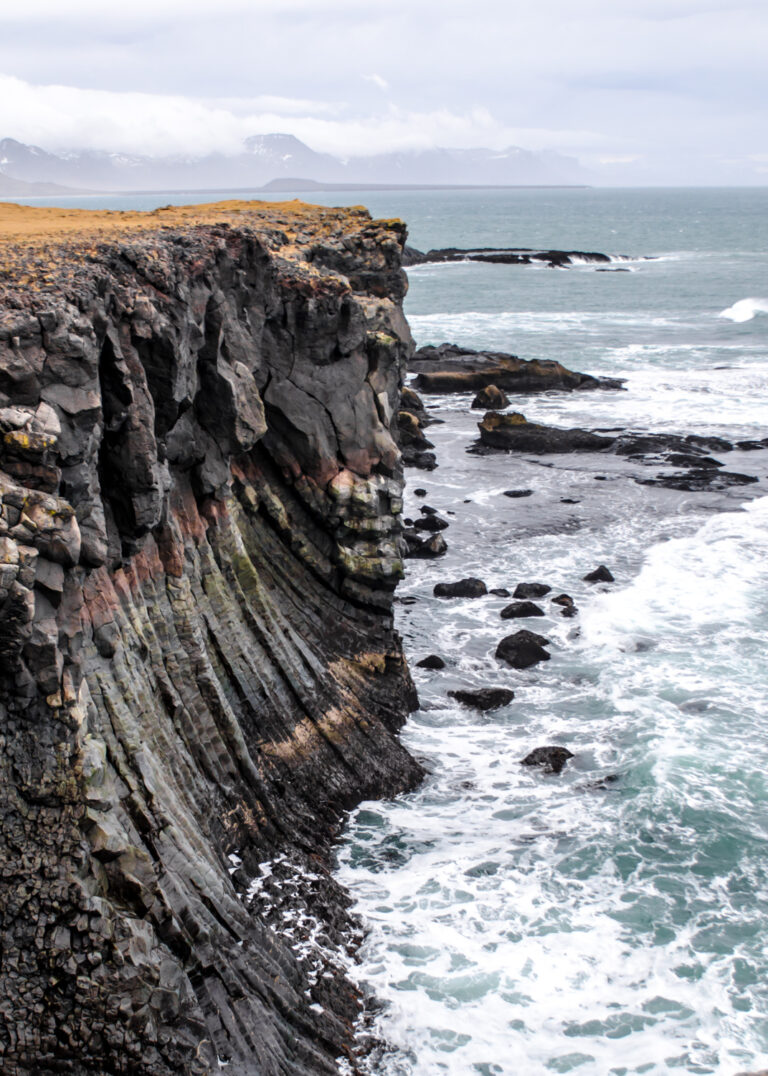
Looks can be deceiving and, for once, photos make the natural bridge look even more epic than it actually is. Spoiler alert… in reality its extremely safe and there’s plenty of space to stand in the spot seen above without risking your life.
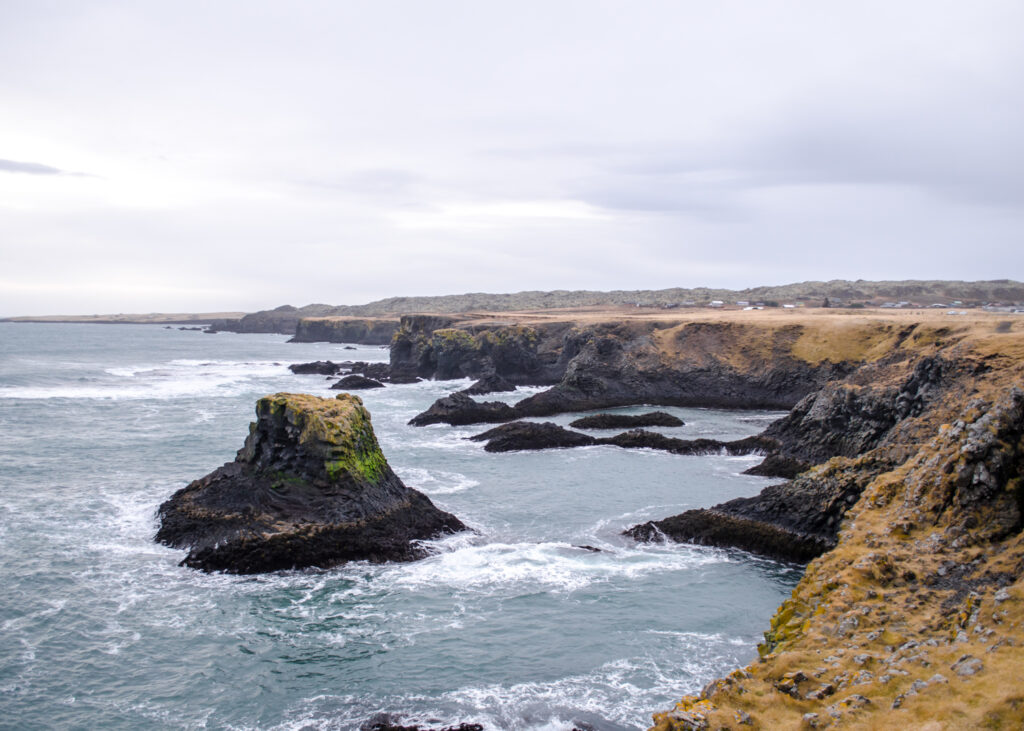
I wish I had spent more time exploring the beautiful Arnarstapi region and cliffs, but that’ll have to go on the ‘next time’ list as well!
27. Budir Black Church (Búðakirkja)
After a short 10 minute detour on the way from Arnastapi to Reykjavik, pay a quick visit to the picturesque Búðakirkja.
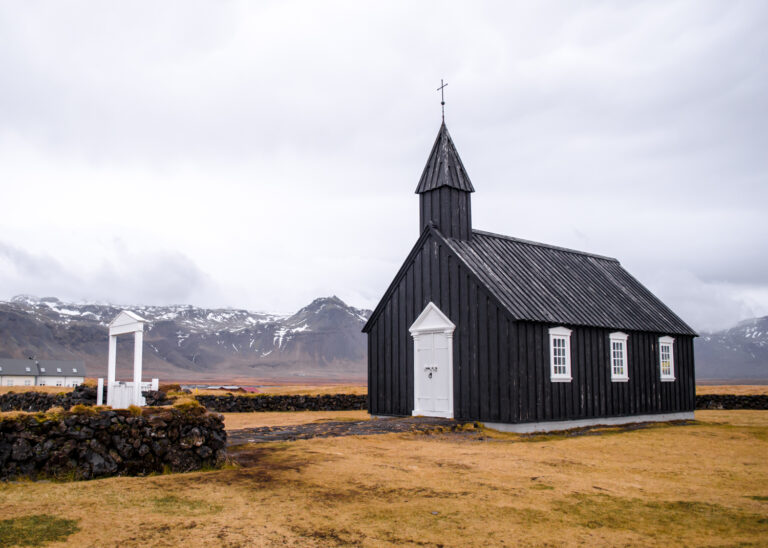
This tiny 19th century wooden church sits on the south side of the Snæfellsnes Peninsula with a stunning mountainous backdrop and is a typical example of an Icelandic structure.
From the church it’s a 200km drive back to Reykjavik.
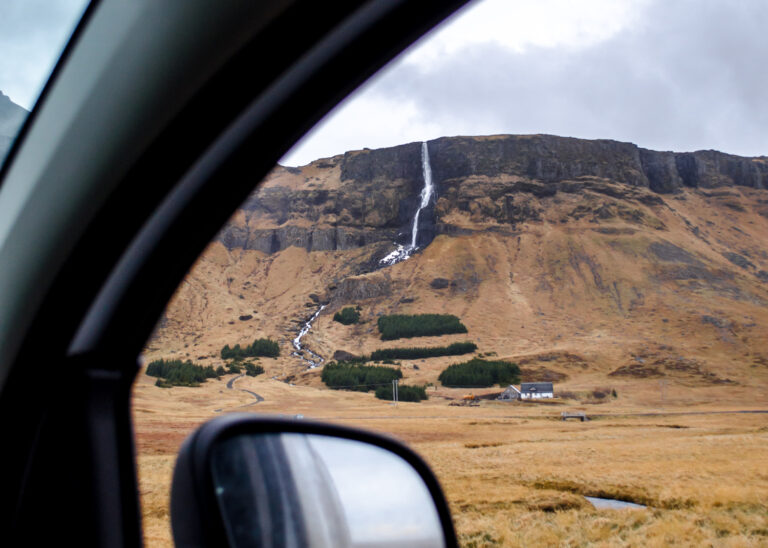
Day 9
Spend your last day in Iceland catching up on anything you missed in the laid-back capital and try some traditional Icelandic cuisine.
28. 101 Icelandic Street Food Cafe
You simply must try some Icelandic food during your stay in the country, and this little cafe in Reykjavik is a real gem.
Although there are many quaint little eateries in Reykjavik, I absolutely loved the 101 Icelandic Street Food Cafe where I had the shellfish chowder which came served in a massive bread bowl for around £18. I know, the price is a big ‘yikes’… but this is apparently the cheapest place to eat out in Reykjavik.
The best part is that you can get free refills here. Yeah that’s right, all-you-can-eat seafood soup! Yum.
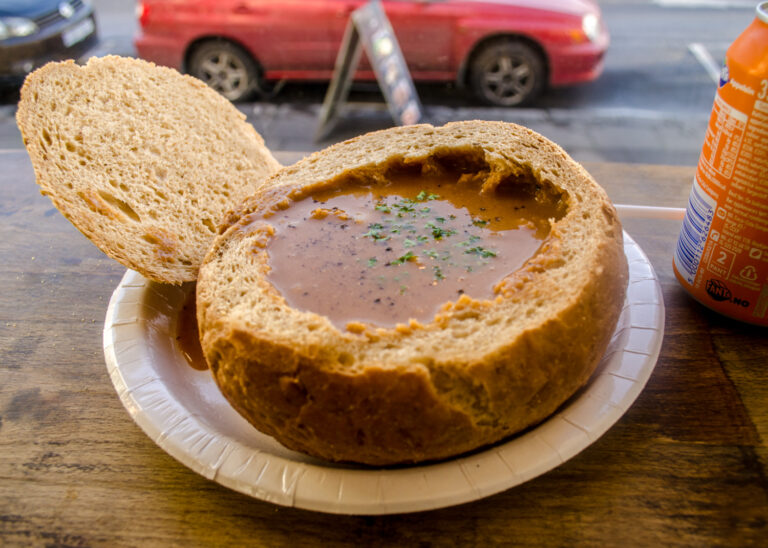
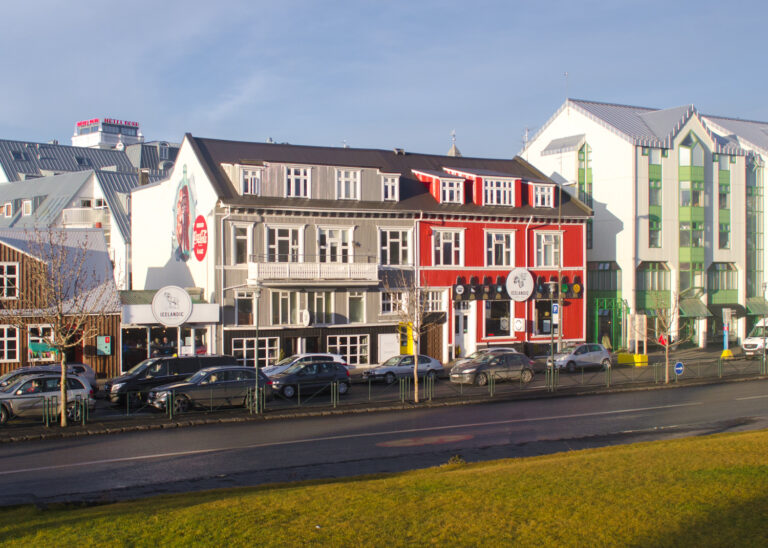
Day 10
That’s it, your epic road trip around Iceland’s Ring Road has come to an end! Today’s the day you’ll return the campervan and have to drag yourself away from Iceland.
Top up the fuel and hope that there aren’t any new scratches you didn’t notice or you could be slapped with a hefty bill for repairs. I got VERY lucky in that regard. Keep reading to find out how.
If you want to spend your last night in style, check out these affordable hostels in Reykjavik.
My experience in Iceland
I’ll try to keep this section light to avoid rambling about this amazing country for too long, but in short: my Iceland trip was one of my favourite travel experiences ever.
I drove 2195km in 8 days and spent one day on either side of the trip in Reykjavik. I ticked off personal bucket list destinations, slept under the Northern Lights… and best of all, I didn’t hurt burn that big a hole in the bank account!
In winter the weather can be harsh, and as a result there were a few things I had to skip like Stokksnes. I would still travel Iceland in winter again though, because I would absolutely hate to have a 200km drive in a convoy of motorhomes and tour buses! The only real benefit I see of travelling in summer is the longer daylight hours as I just had 5 or 6 to play with and often found myself driving in the dark.
How much did I spend?
Spending breakdown
Campervan = £550 (£55 per day)
Petrol = £300 (£30 per day)
Campsites = £90 (3 nights)
Food and other = £125 (£12.50 per day)
Total = £1065 (£106.50 per day)
Total per person = £532.50 (£53.25 per day)
A note on sleeping rough
I saved a lot of money by only staying in campsites when I had to and sleeping rough as much as possible.
This obviously poses the risk of upsetting the local people, but I had no issues doing this as Iceland is a vast country and you can usually always find somewhere secluded to spend the night where you aren’t bothering anyone. This was only possibly as it was winter and the days are very short and roads much quieter. You can use toilets at petrol stations and get a shower at public places like swimming pools to save money.
A good rule is to park when it’s dark and leave before the sun comes up. Remember to always be respectful!
I’ve dreamed about going back ever since my trip ended in late 2018, and I’m sure one day I will!
Until next time!
5 Iceland packing essentials
The harsh climate of a winter in Iceland call for certain essential items. Below are some things you’ll need before your adventure!
- Thick socks: It will be cold but you can do what you can to keep your toes warm! Buy some thick socks before you go!
- Head torch: With only a few hours of sunlight per day, you’ll likely need some light in the evenings. Check out this head torch.
- Waterproof jacket: Having a decent waterproof jacket or poncho is vital because you never know when the next snow storm is going to hit.
- Hiking boots: For wet, boggy and rocky walking trails it’s important to have sturdy hiking boots to protect your ankles. Make sure they’re waterproof!
- Travel towel: Having a compact travel towel is essential in Iceland, especially if you plan on going swimming in one of the thermal pools!
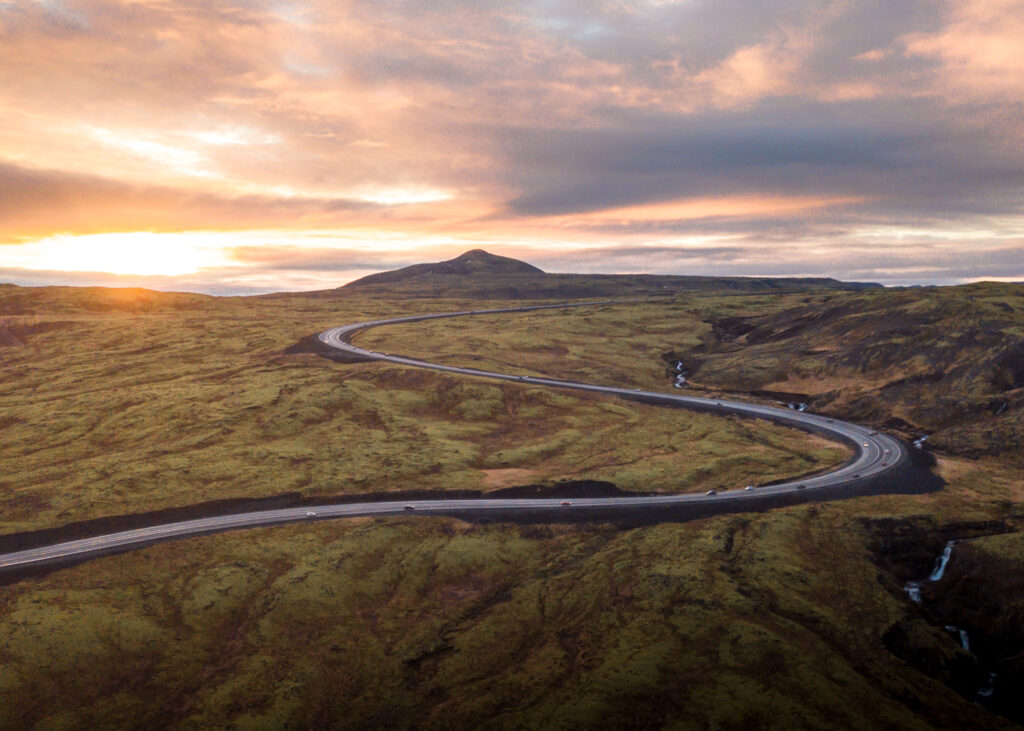
Best tours in Iceland
If you don’t feel confident enough to drive yourself, you’re not alone. Guided tours are popular and always available in Iceland. With this option you can travel stress-free and in comfort while still stopping at some of the country’s most iconic destinations with a local guide.
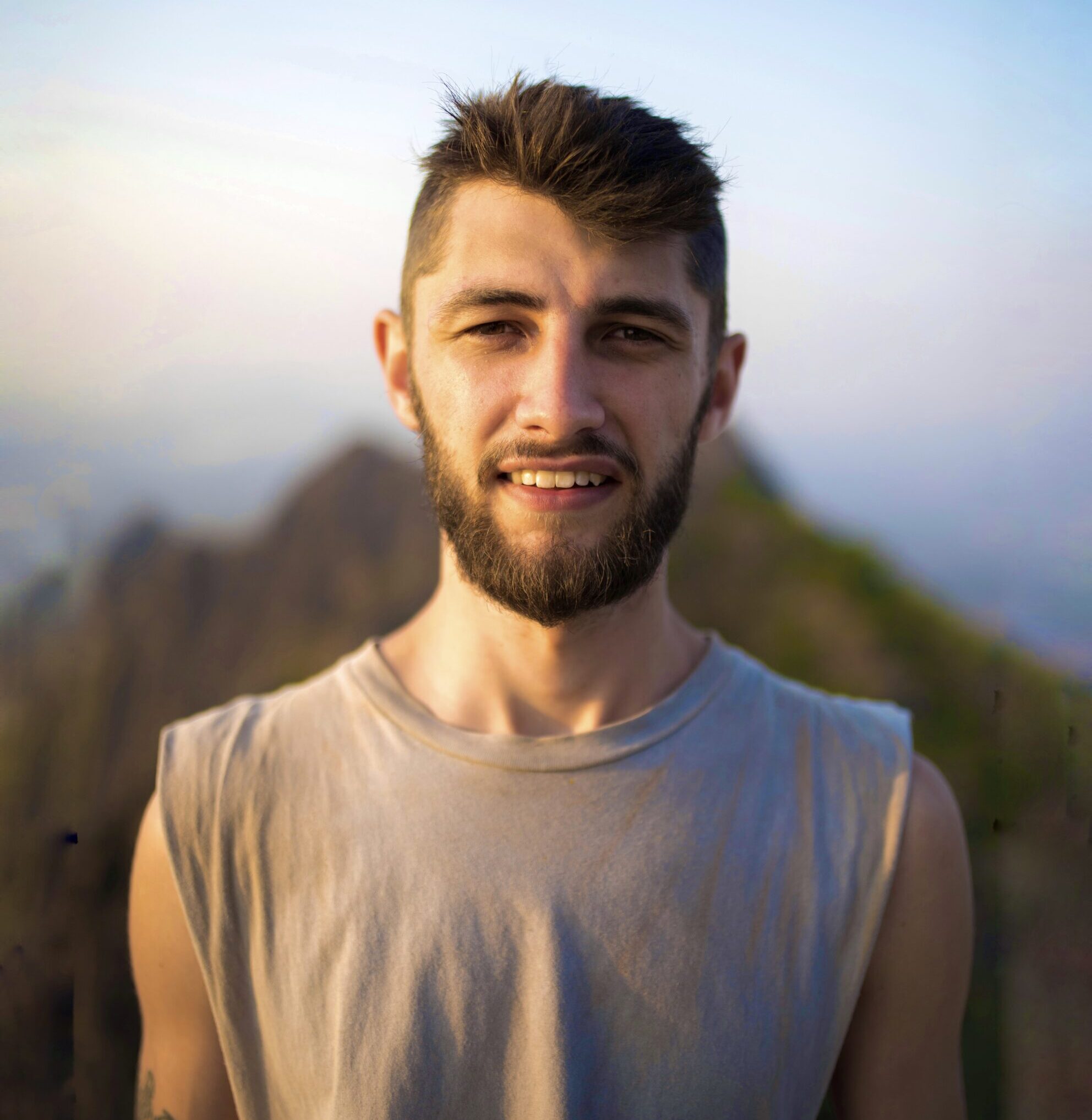
Thank you for reading this travel guide - I hope you found it helpful!
Feel free to leave a comment below if you have any questions and I’ll get back to you as soon as possible
Happy travelling!
HELPFUL RESOURCES FOR PLANNING YOUR TRIP
Accommodation: Booking.com, Hostelworld
Tours: GetYourGuide, Viator, Klook, TripAdvisor
Transport: 12Go, Omio, Trip.com, Rome2Rio
WHO IN THE WORLD IS JAMES?
Click below to learn more about my story, including 5 random facts about me, some travel FAQ’s and my entire travel history.
